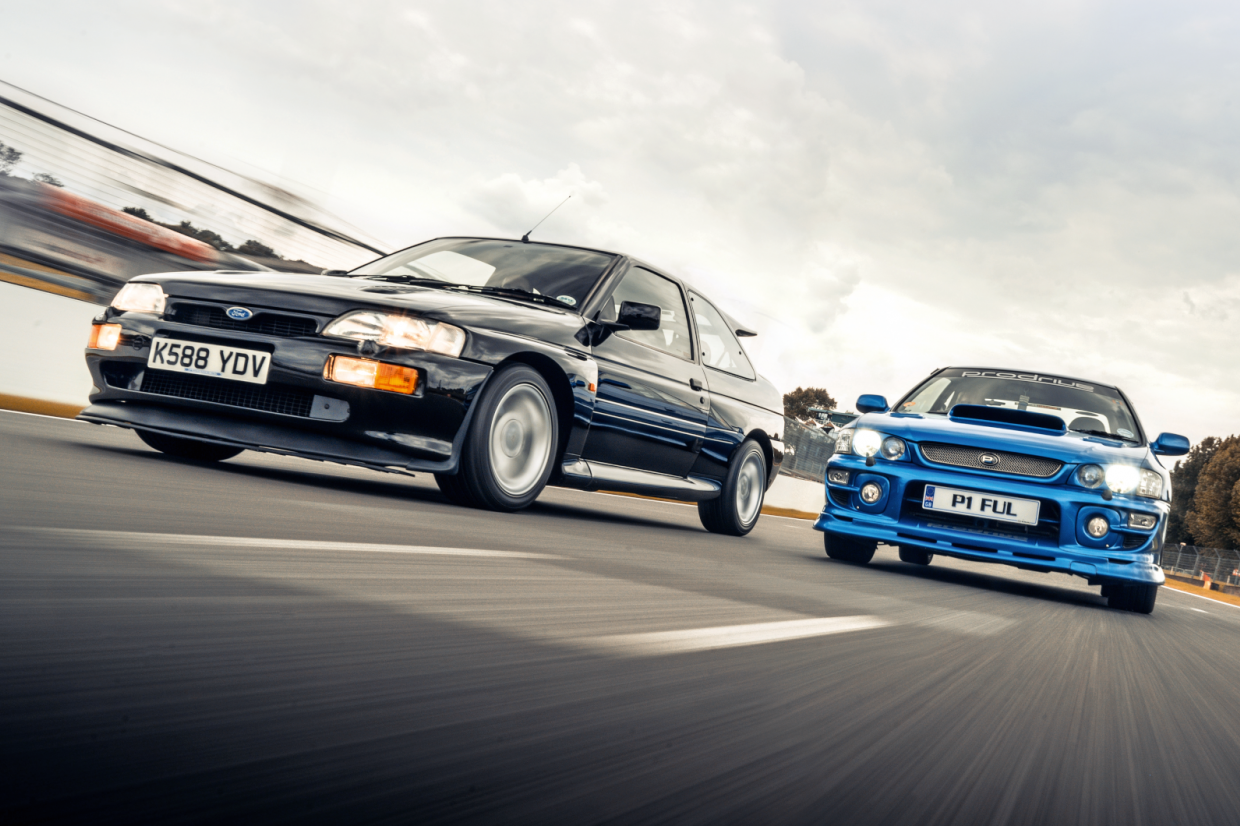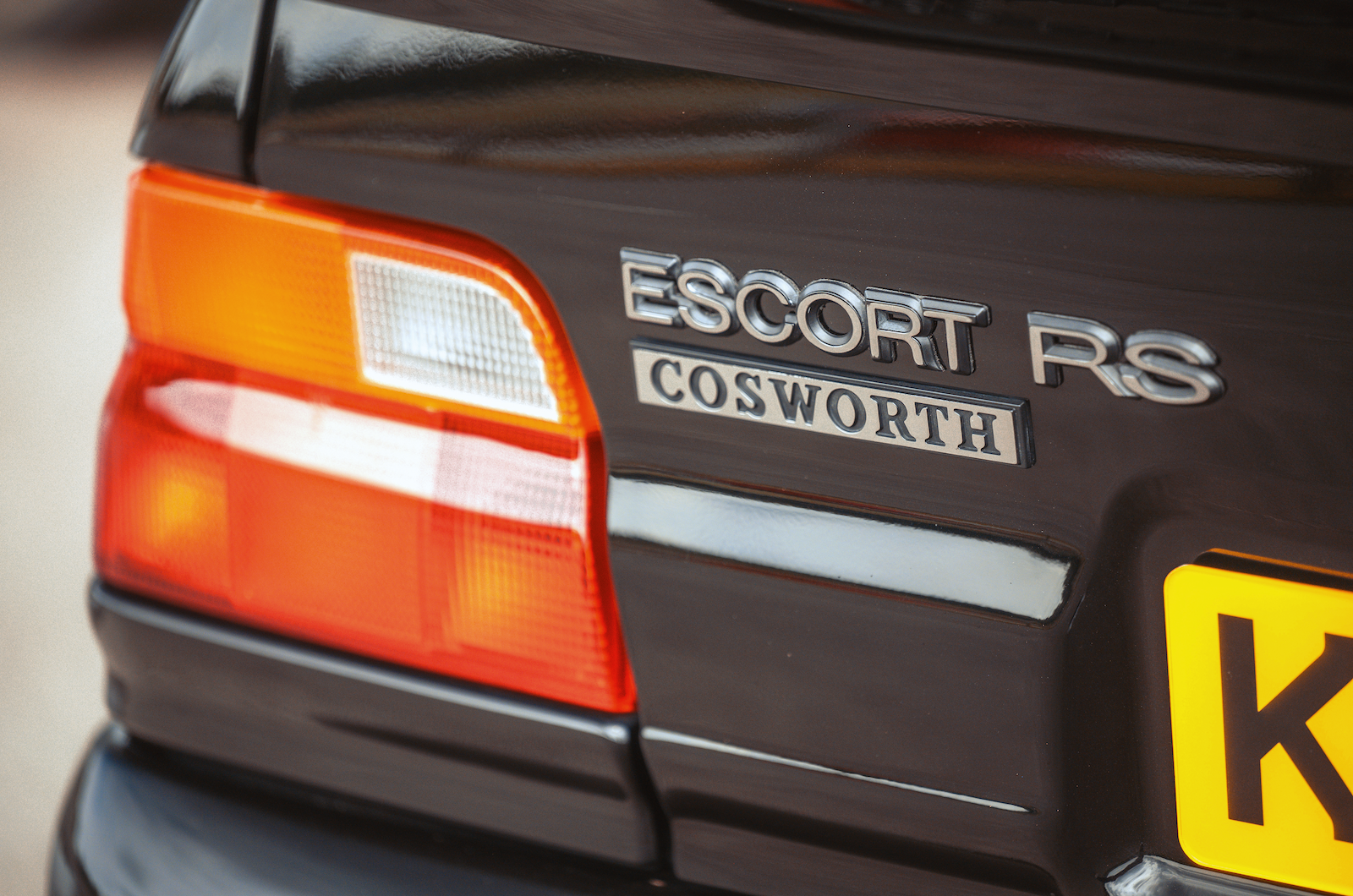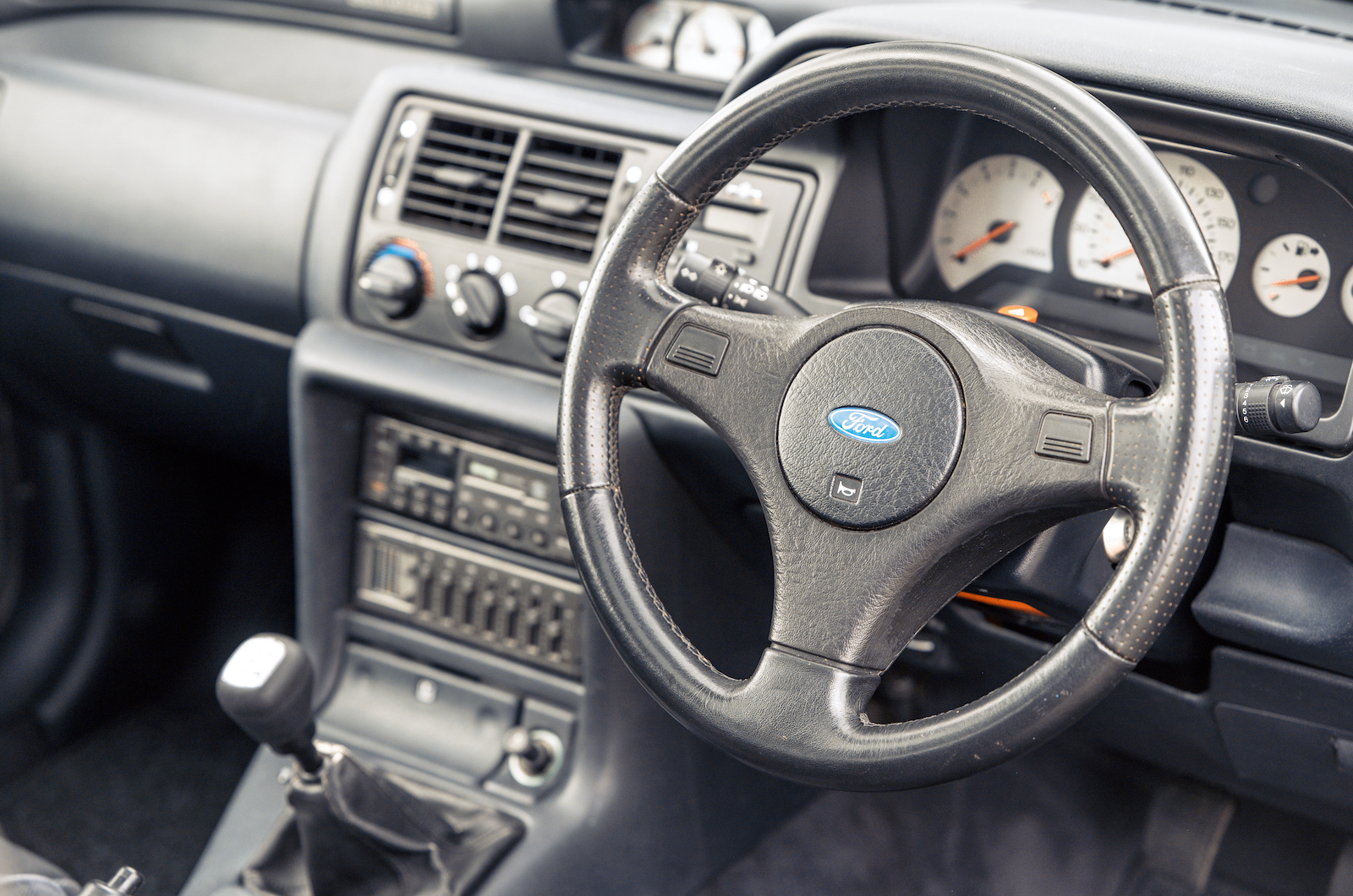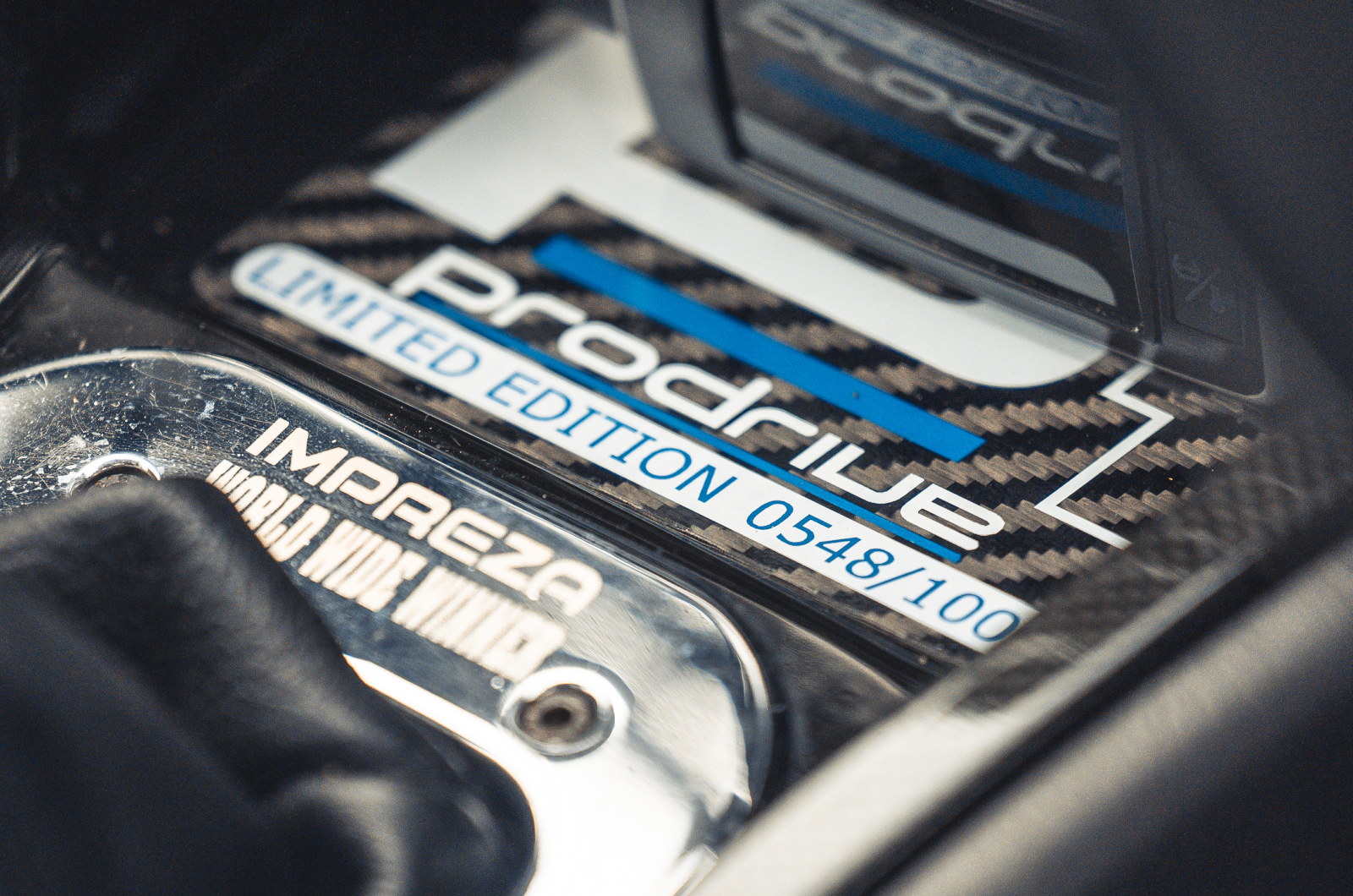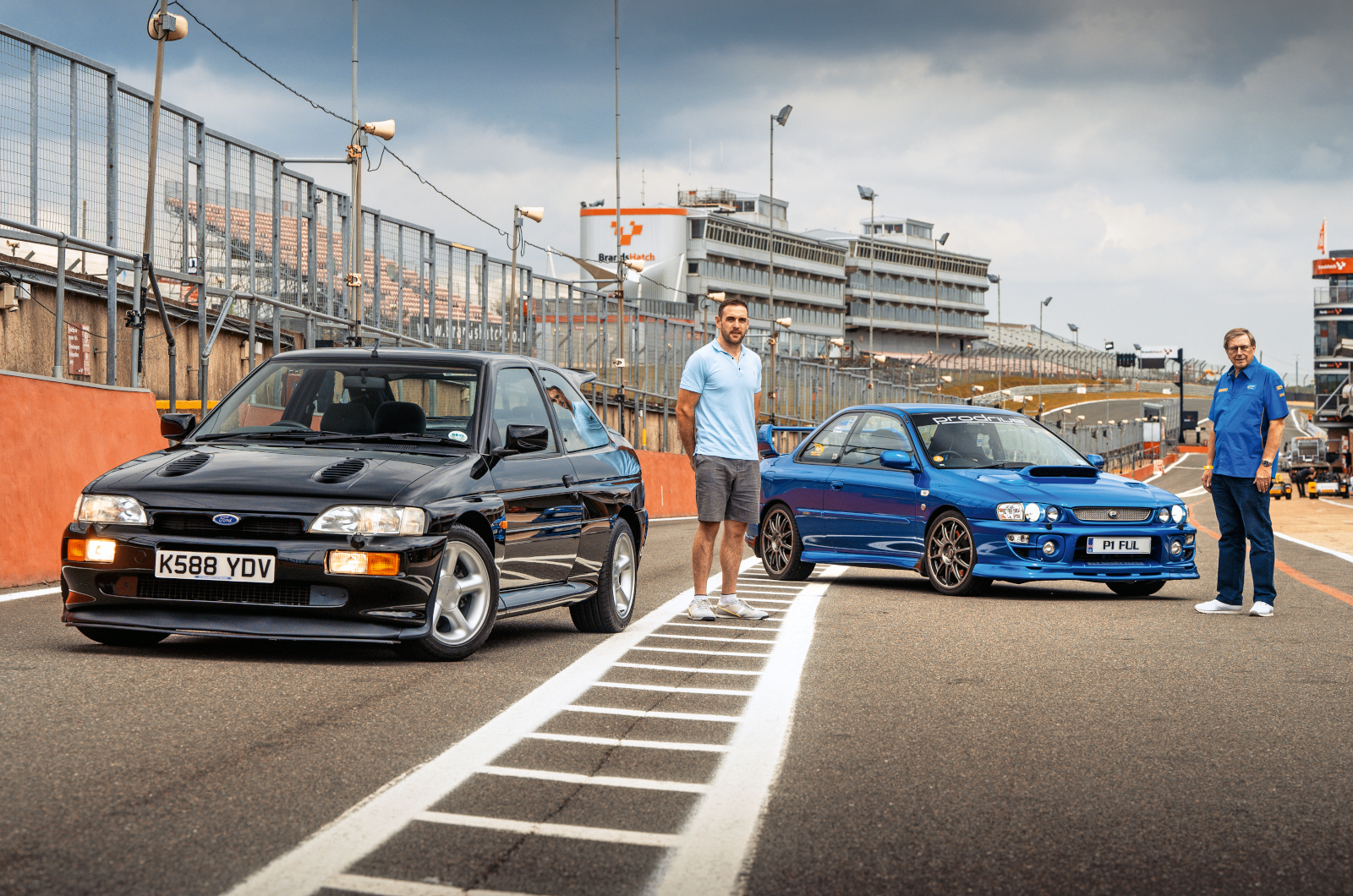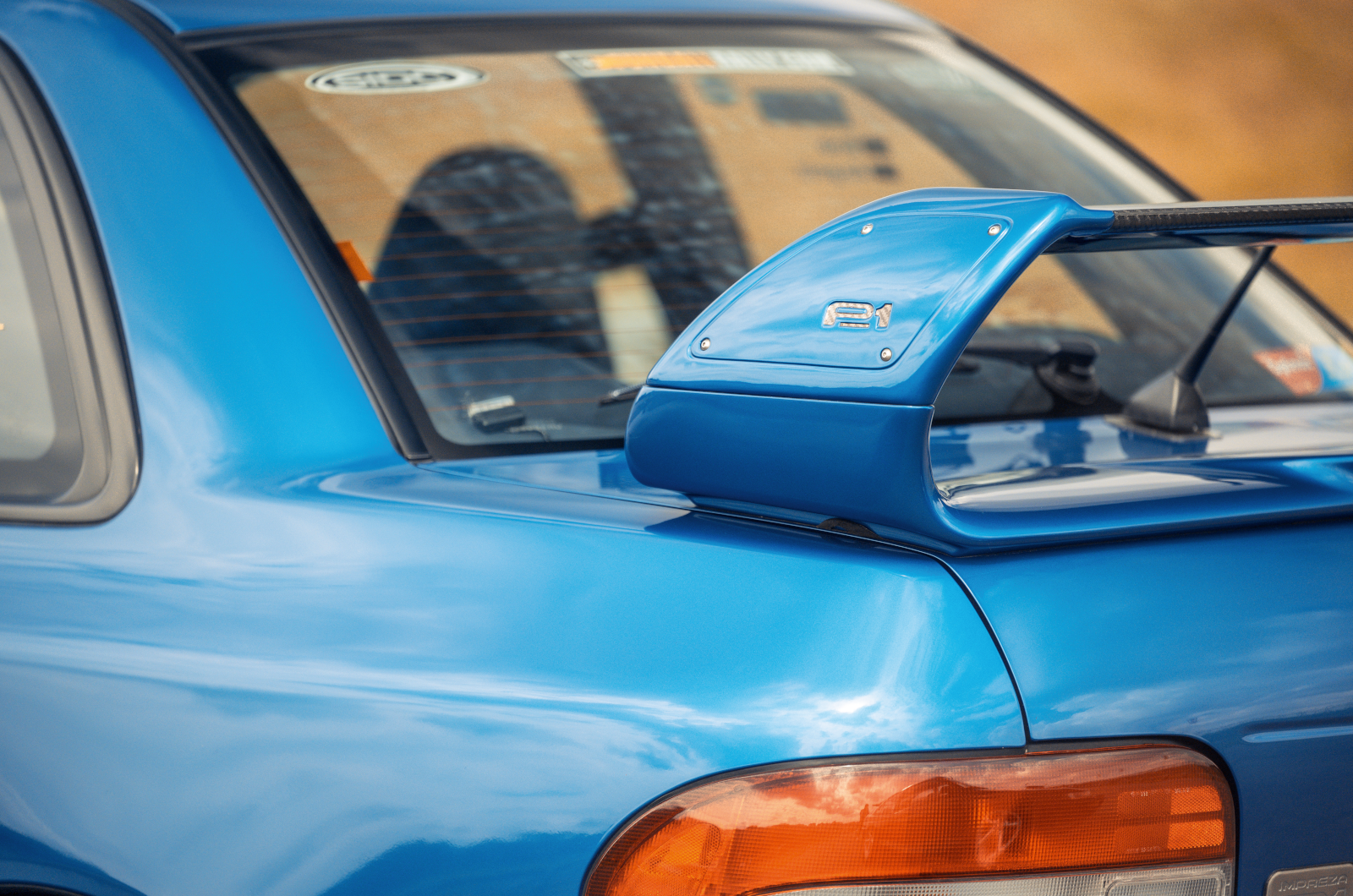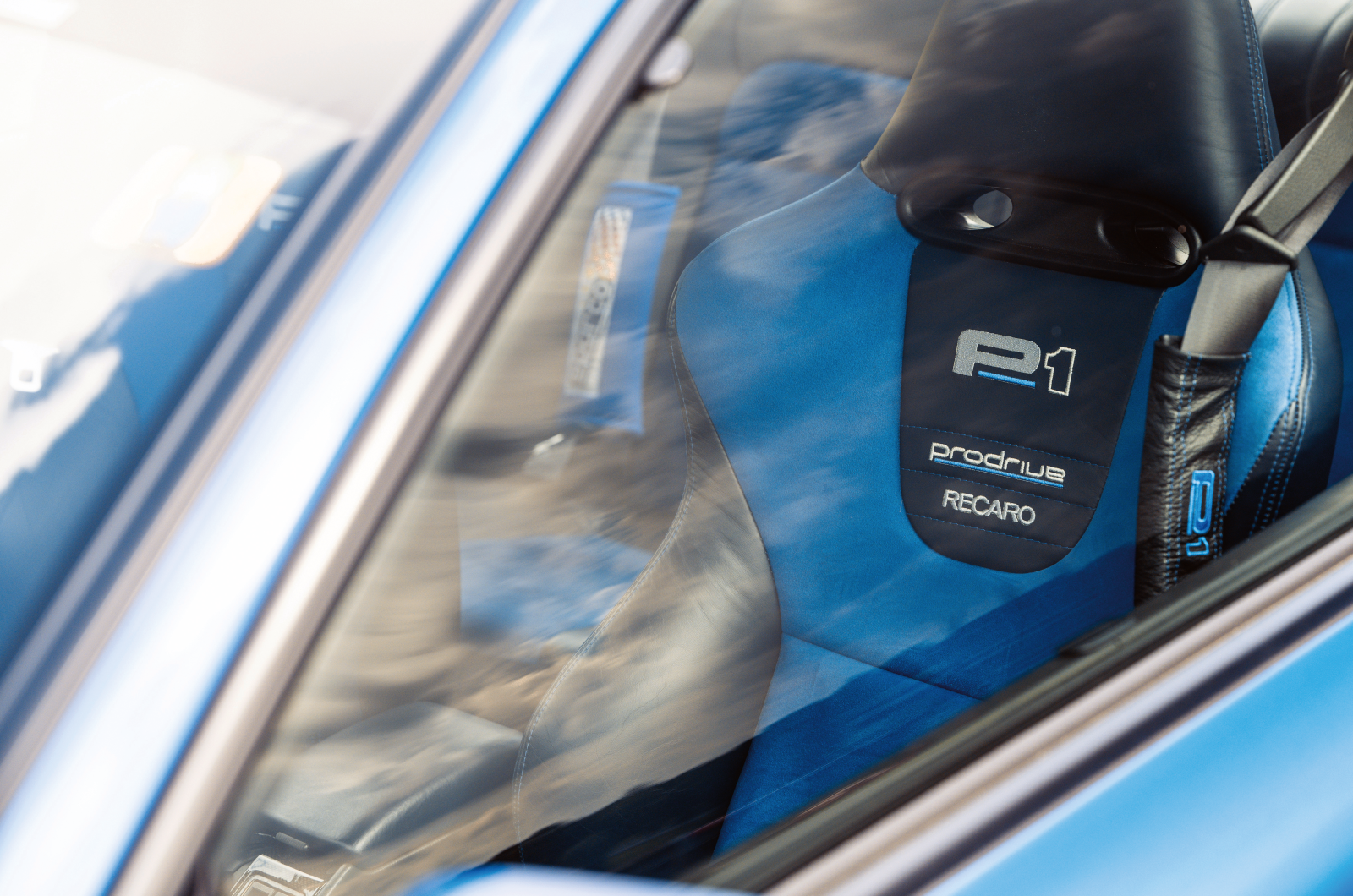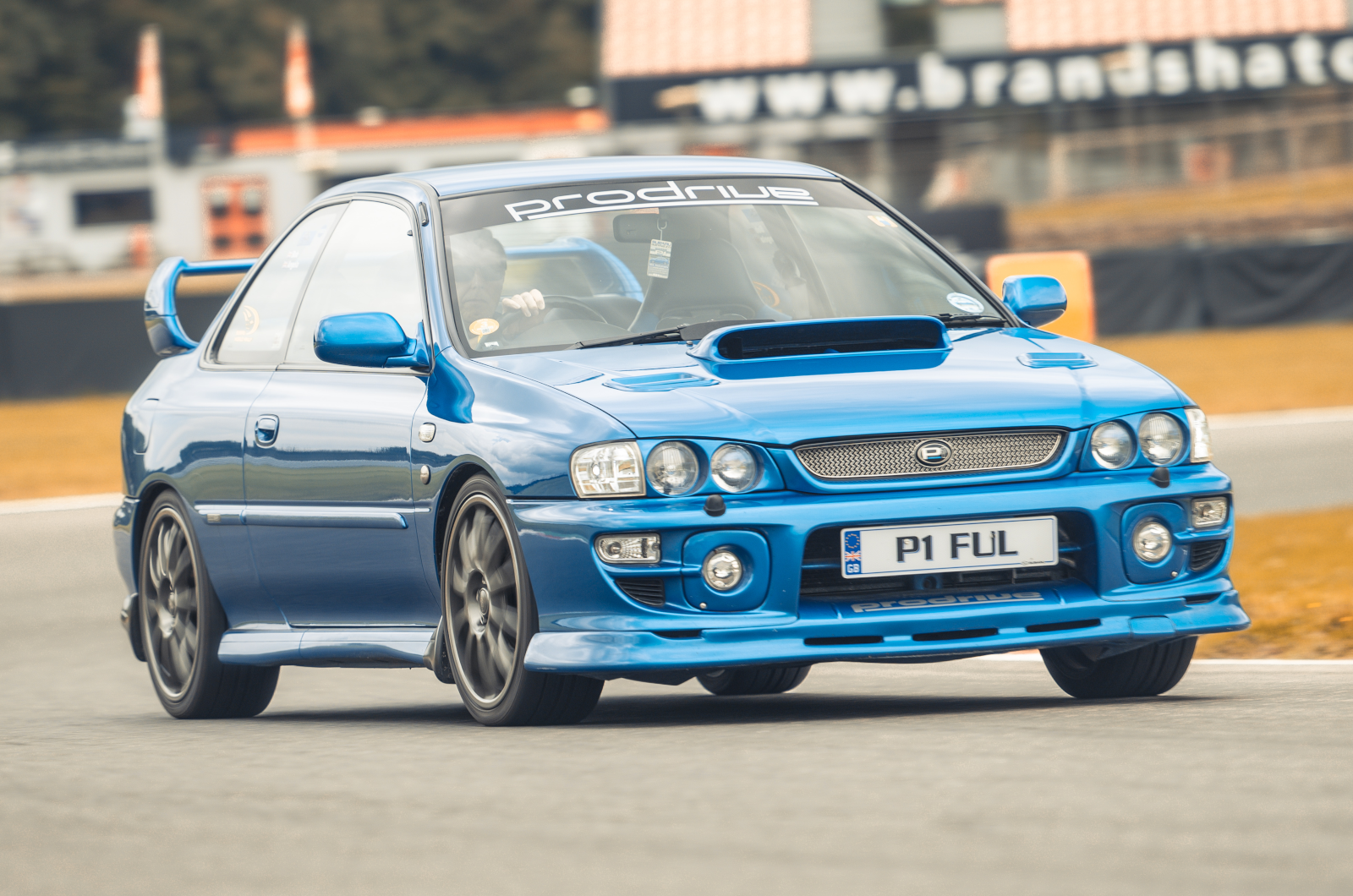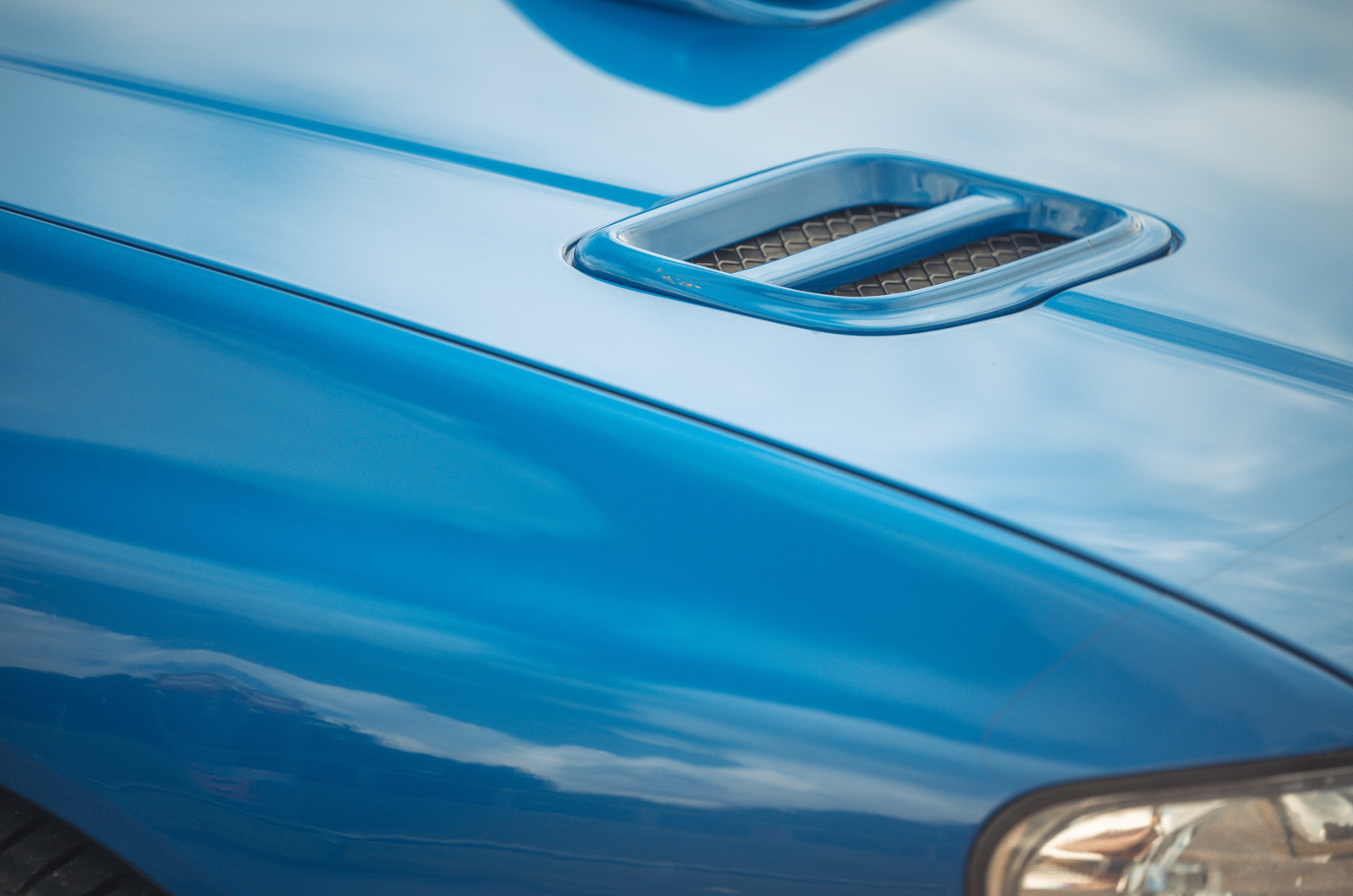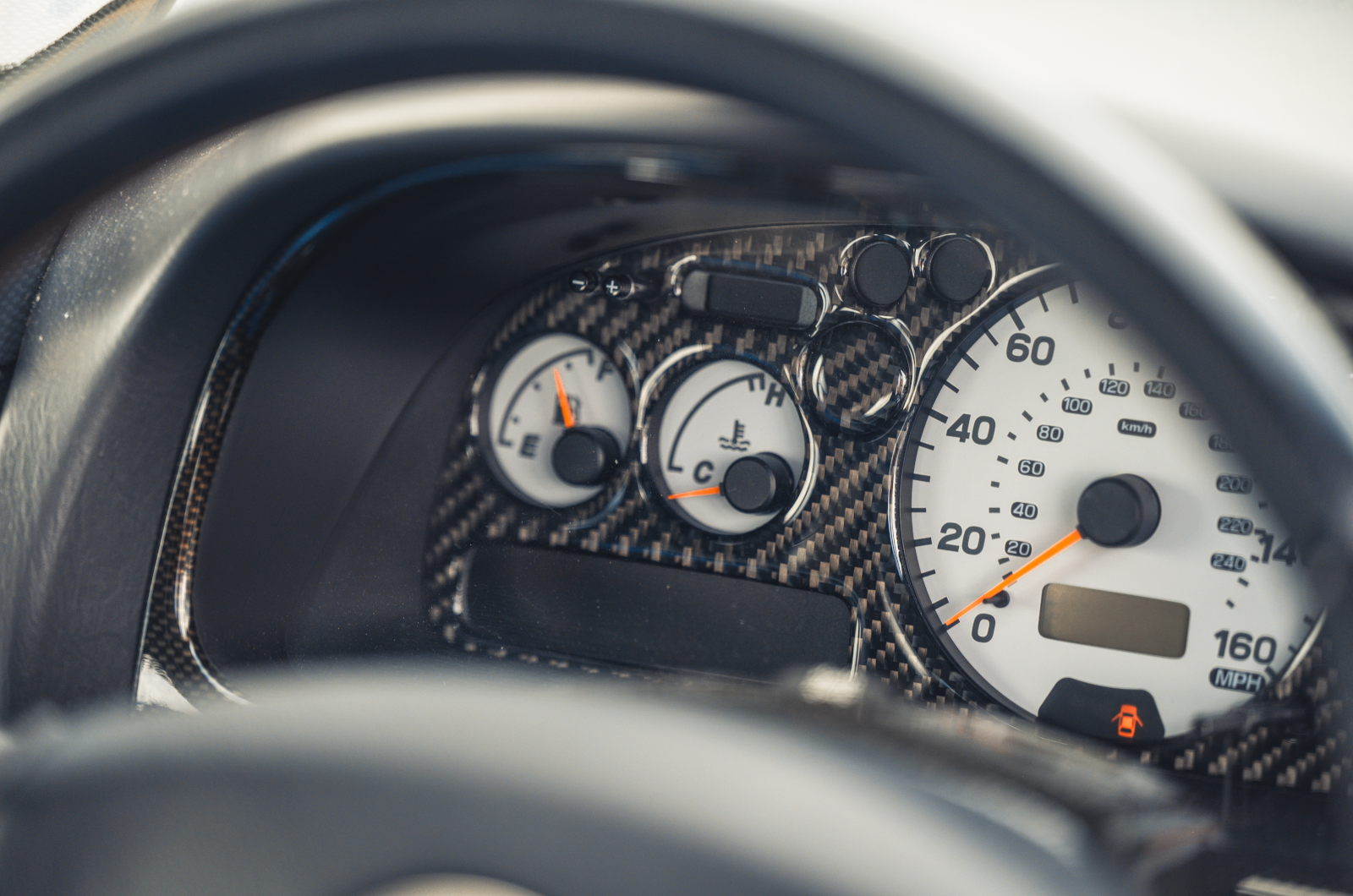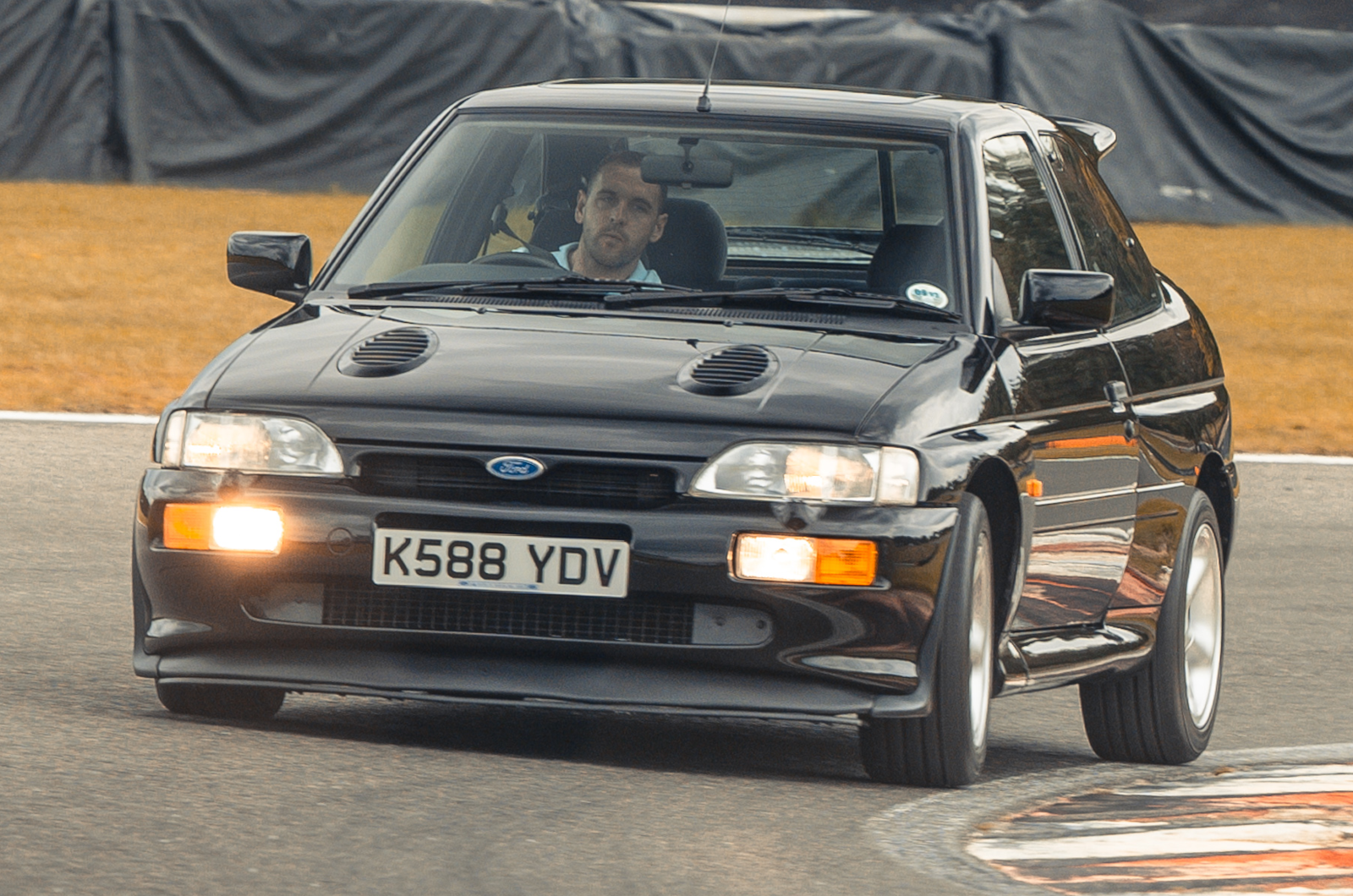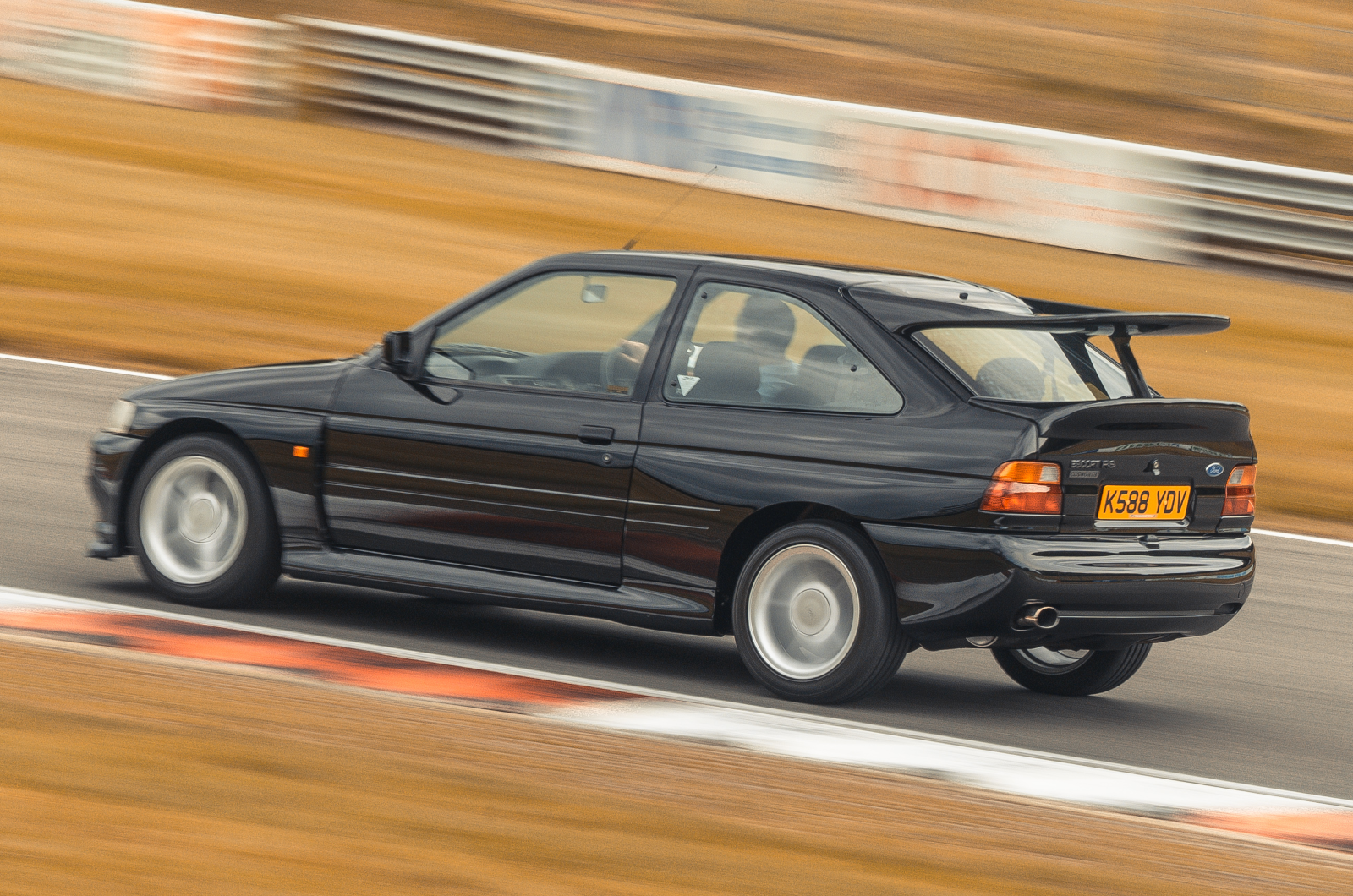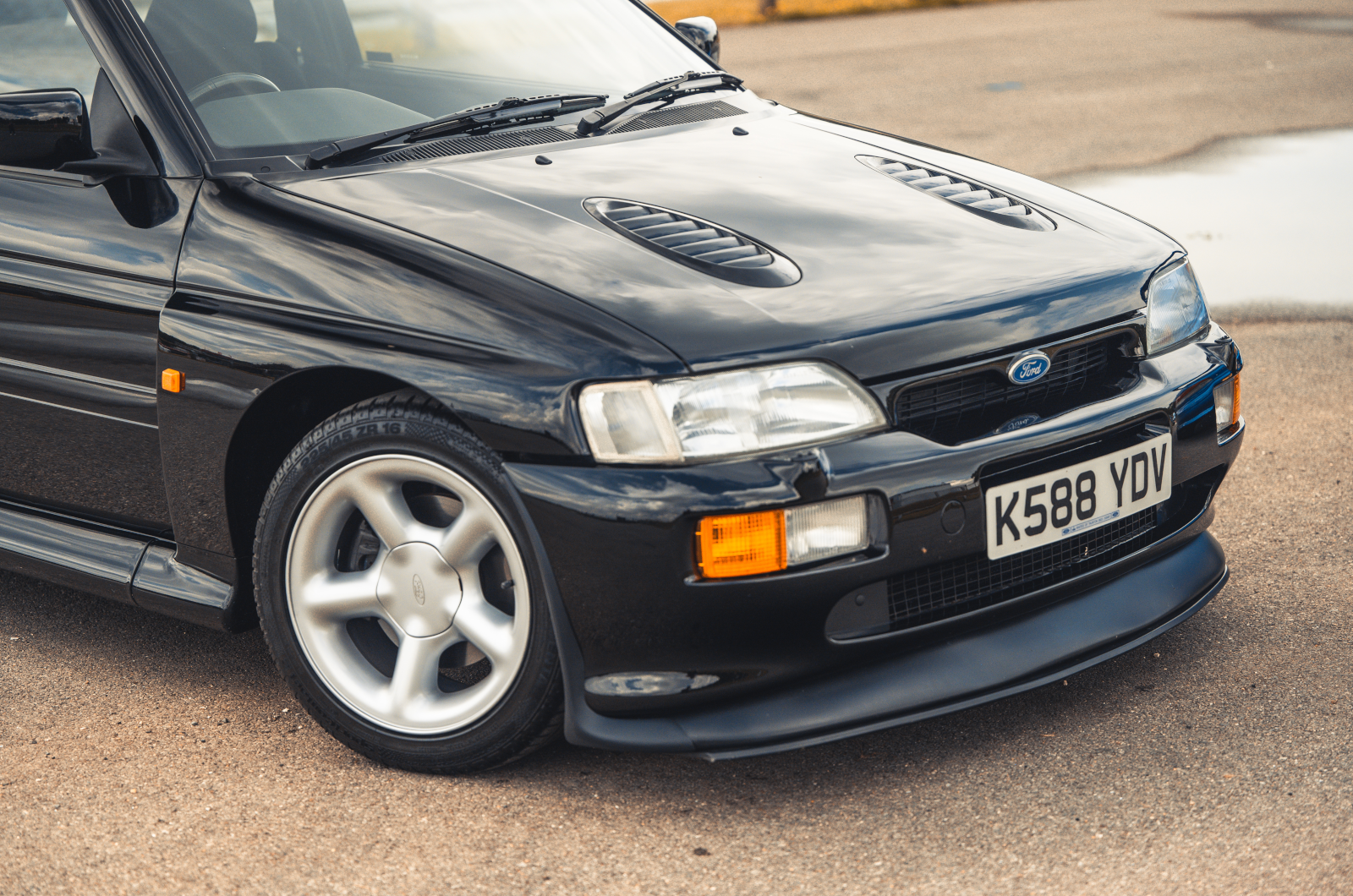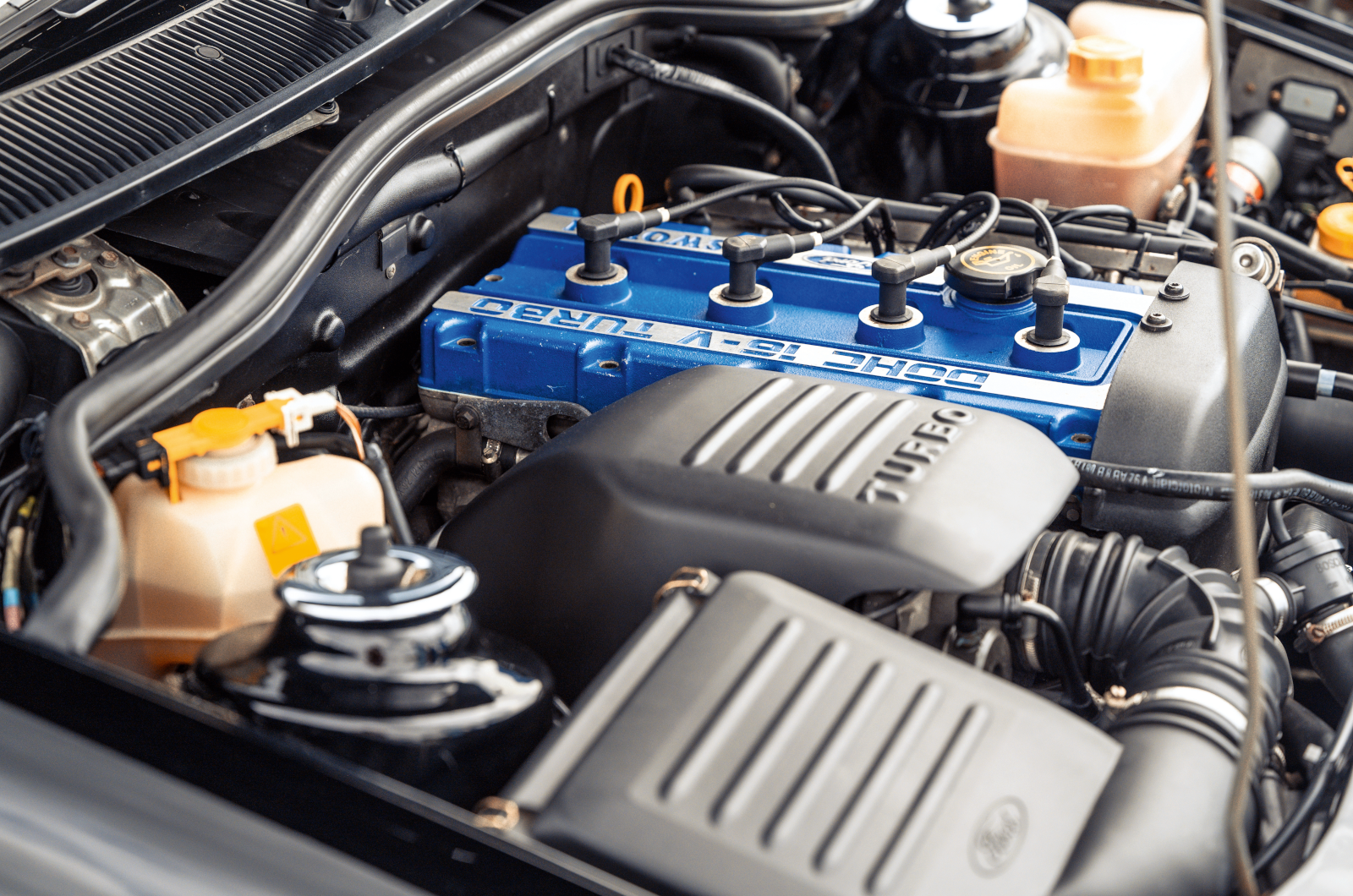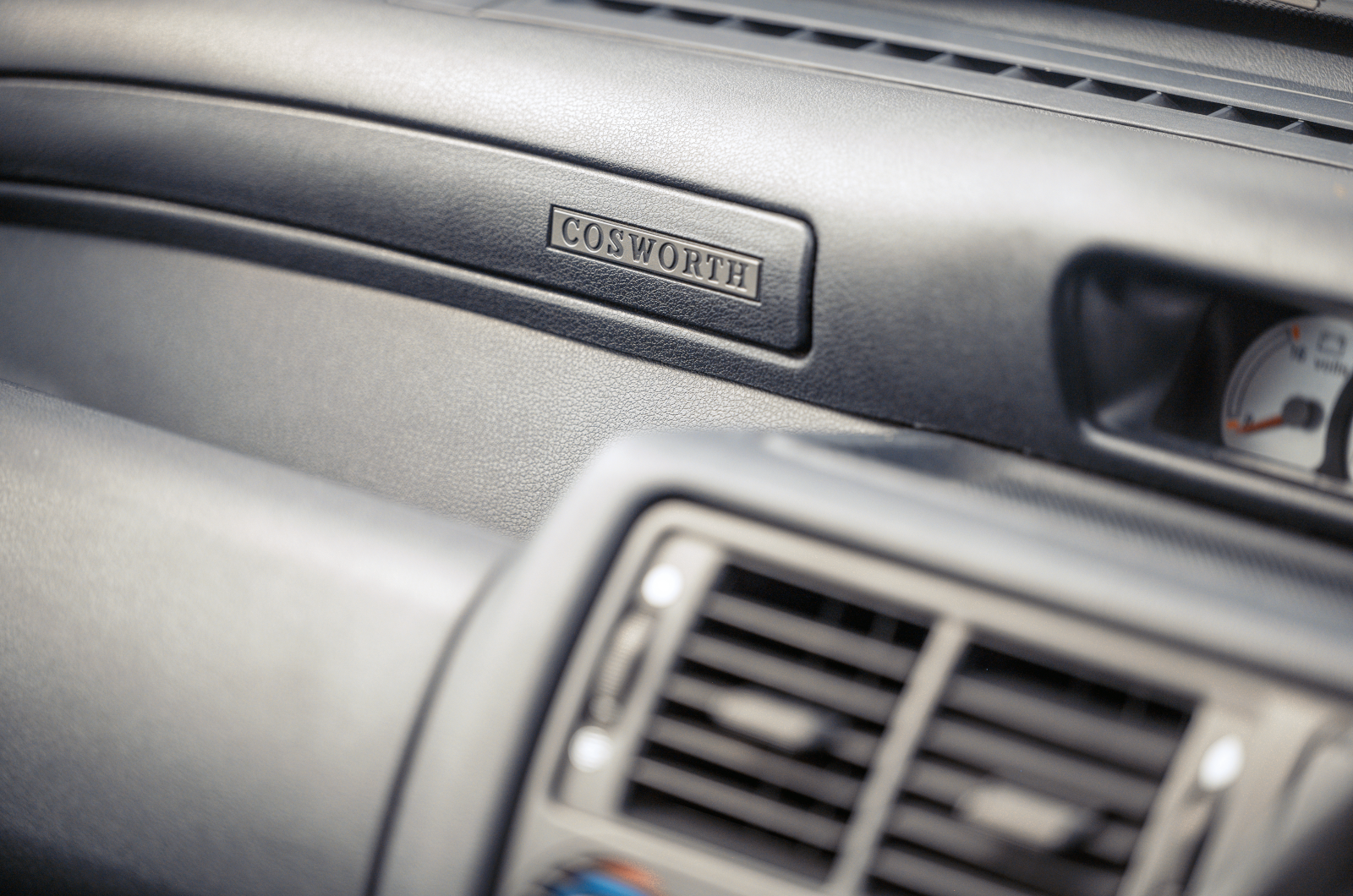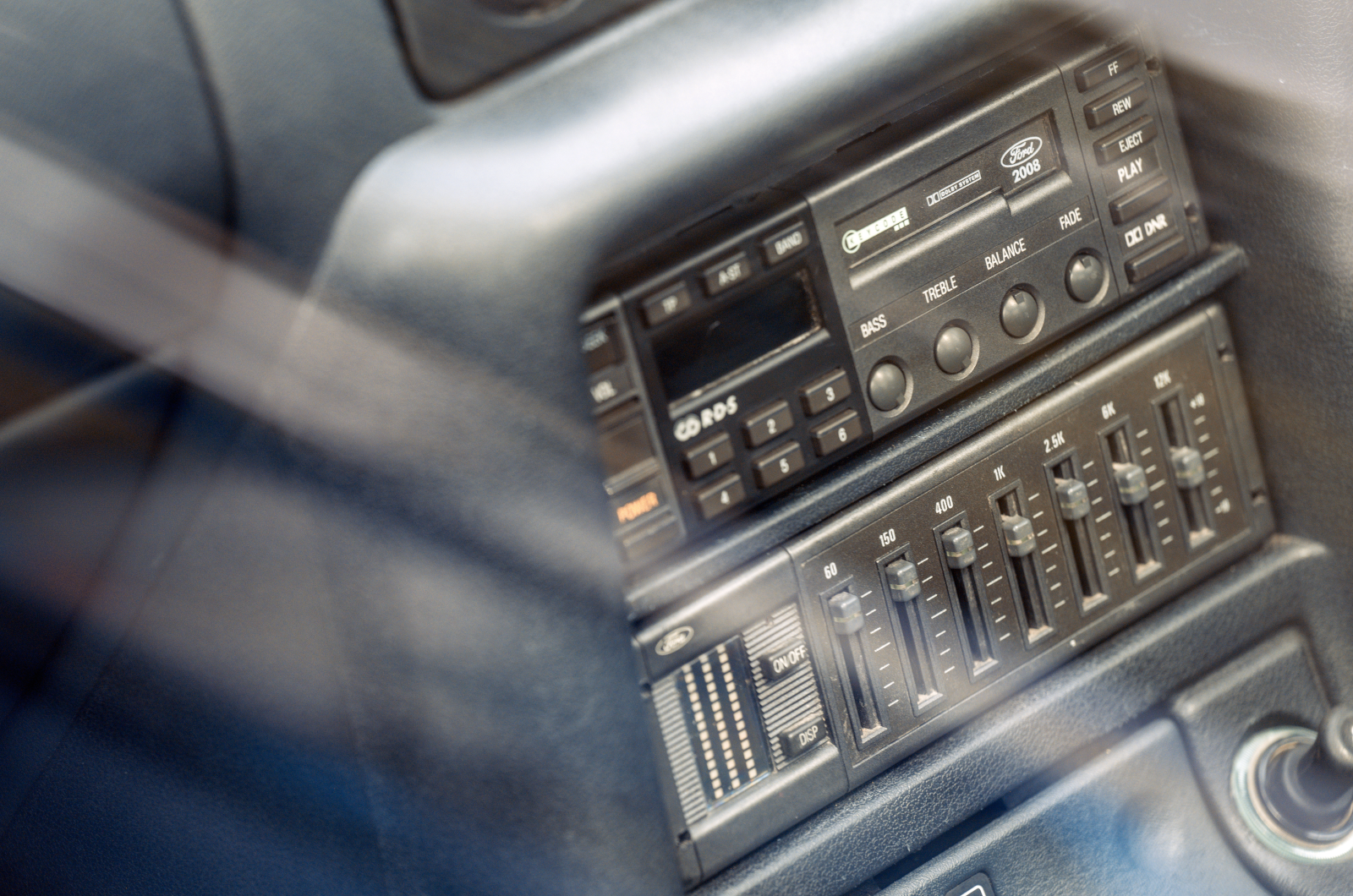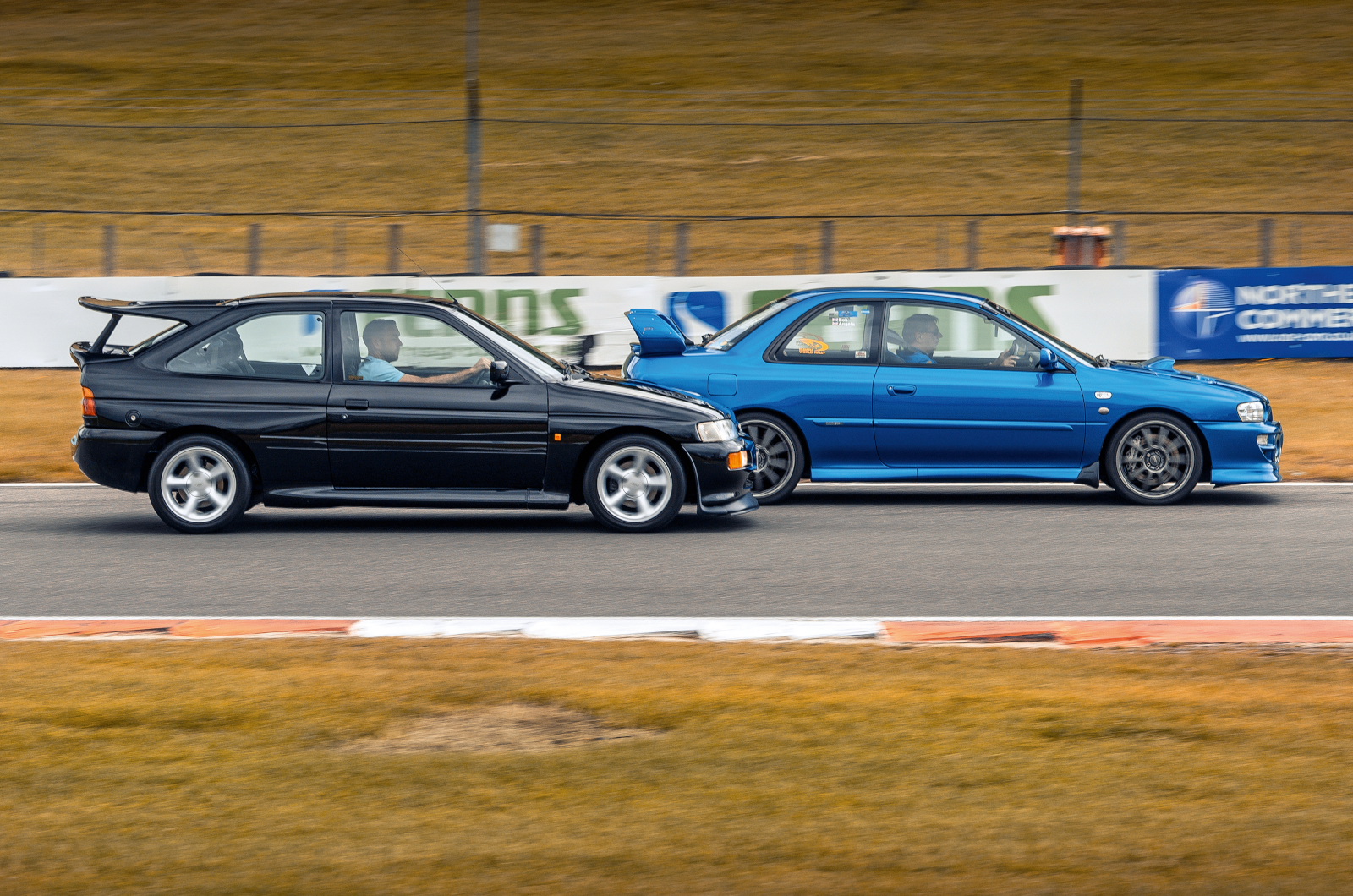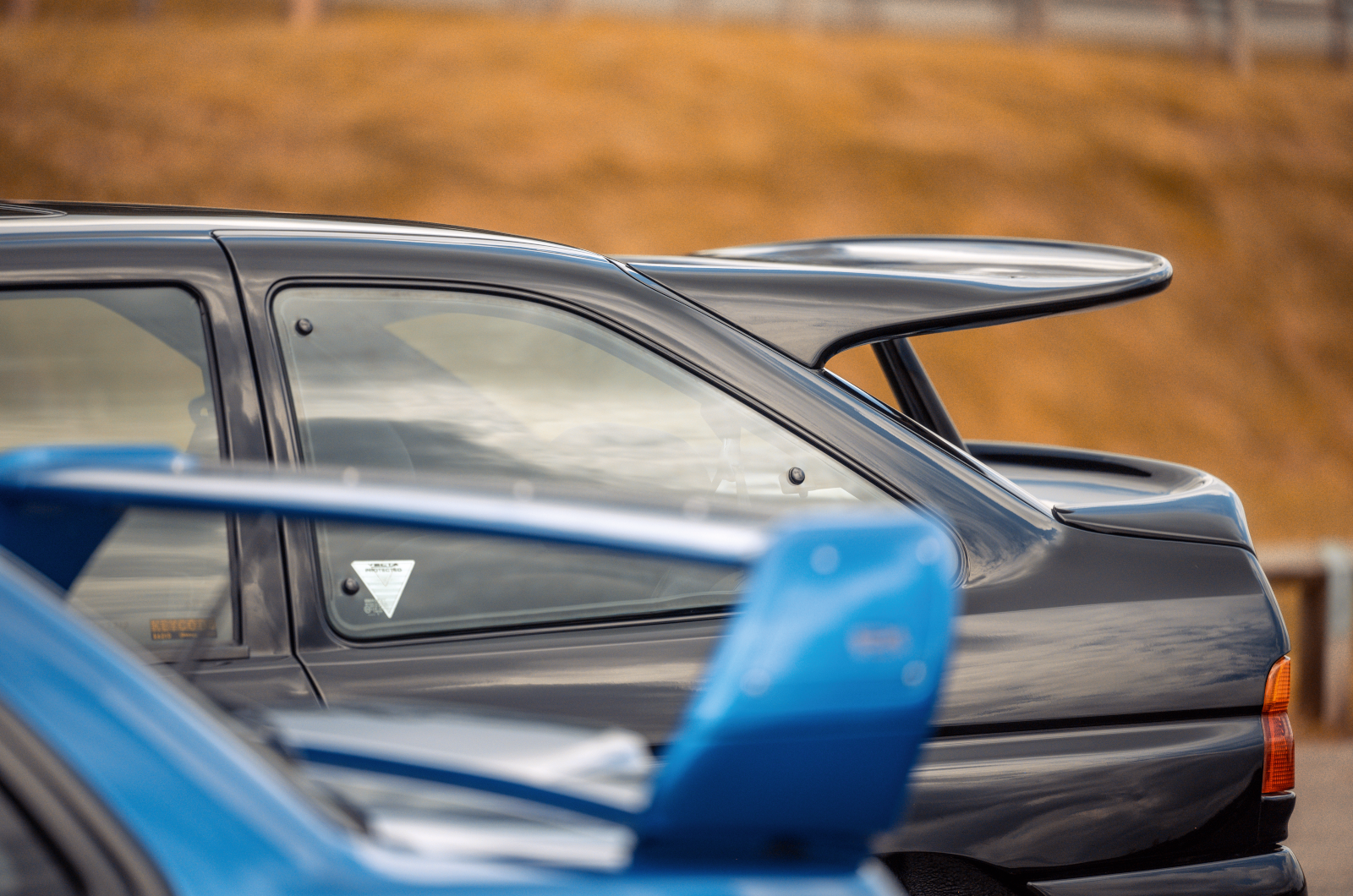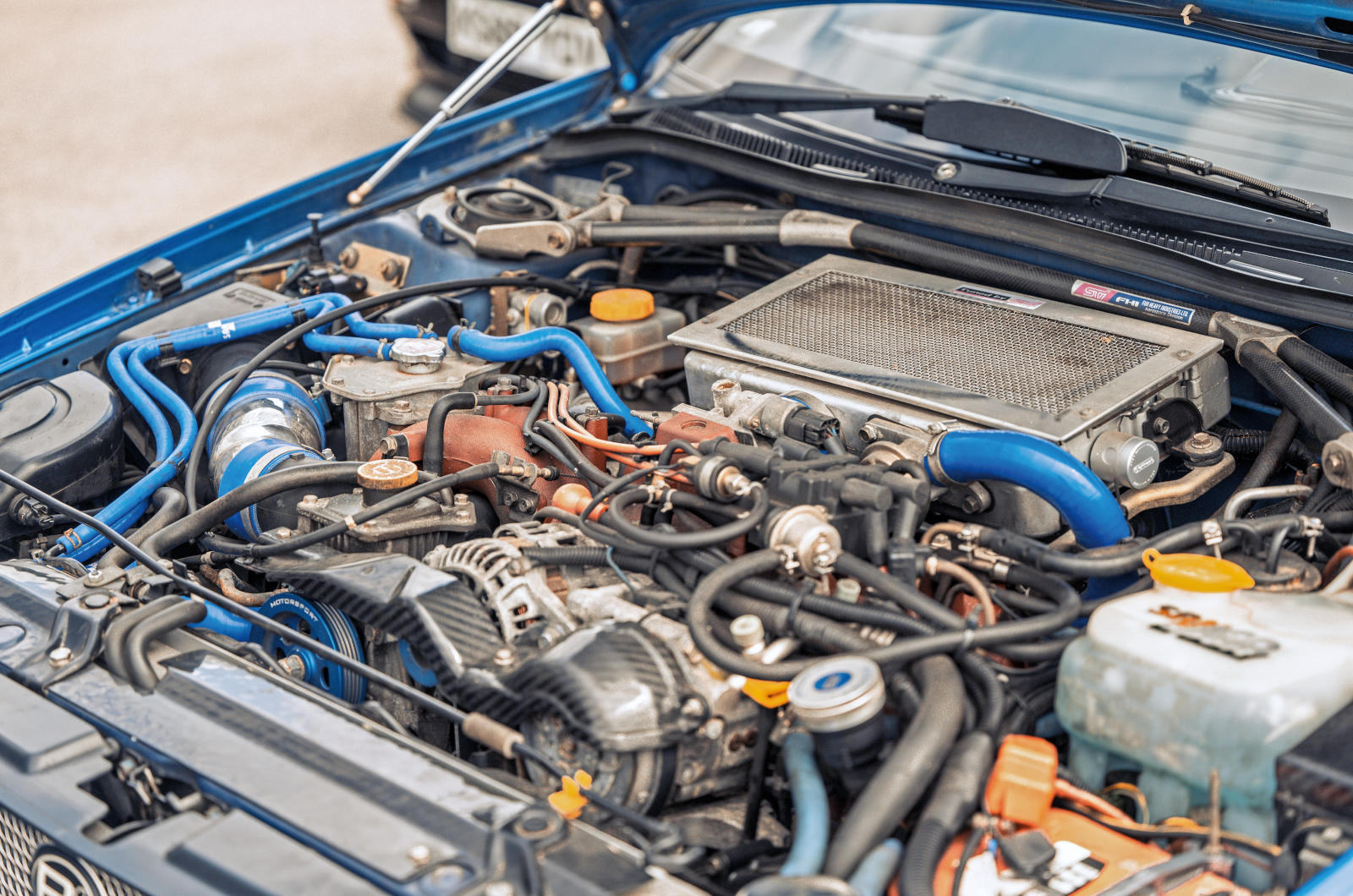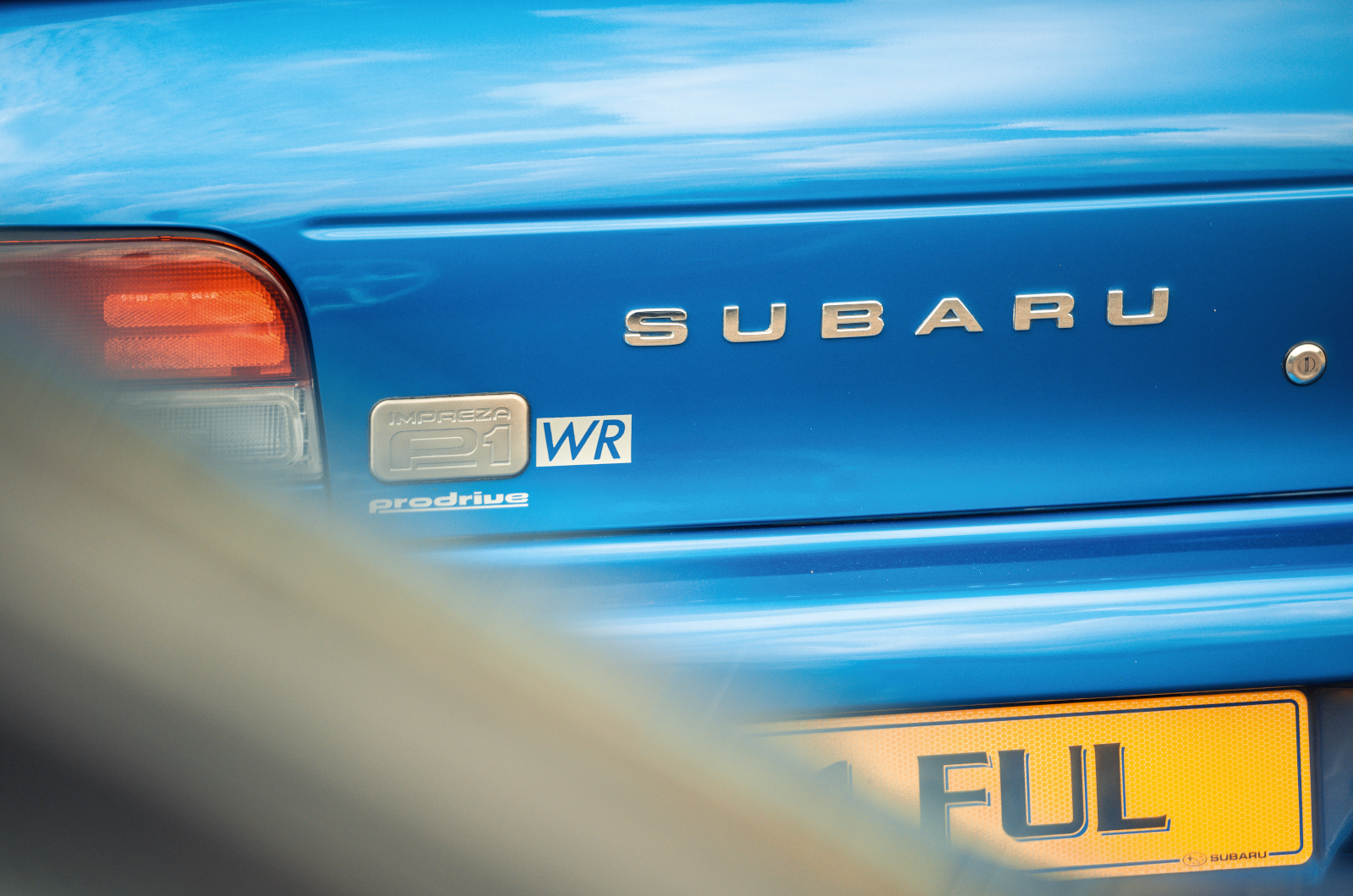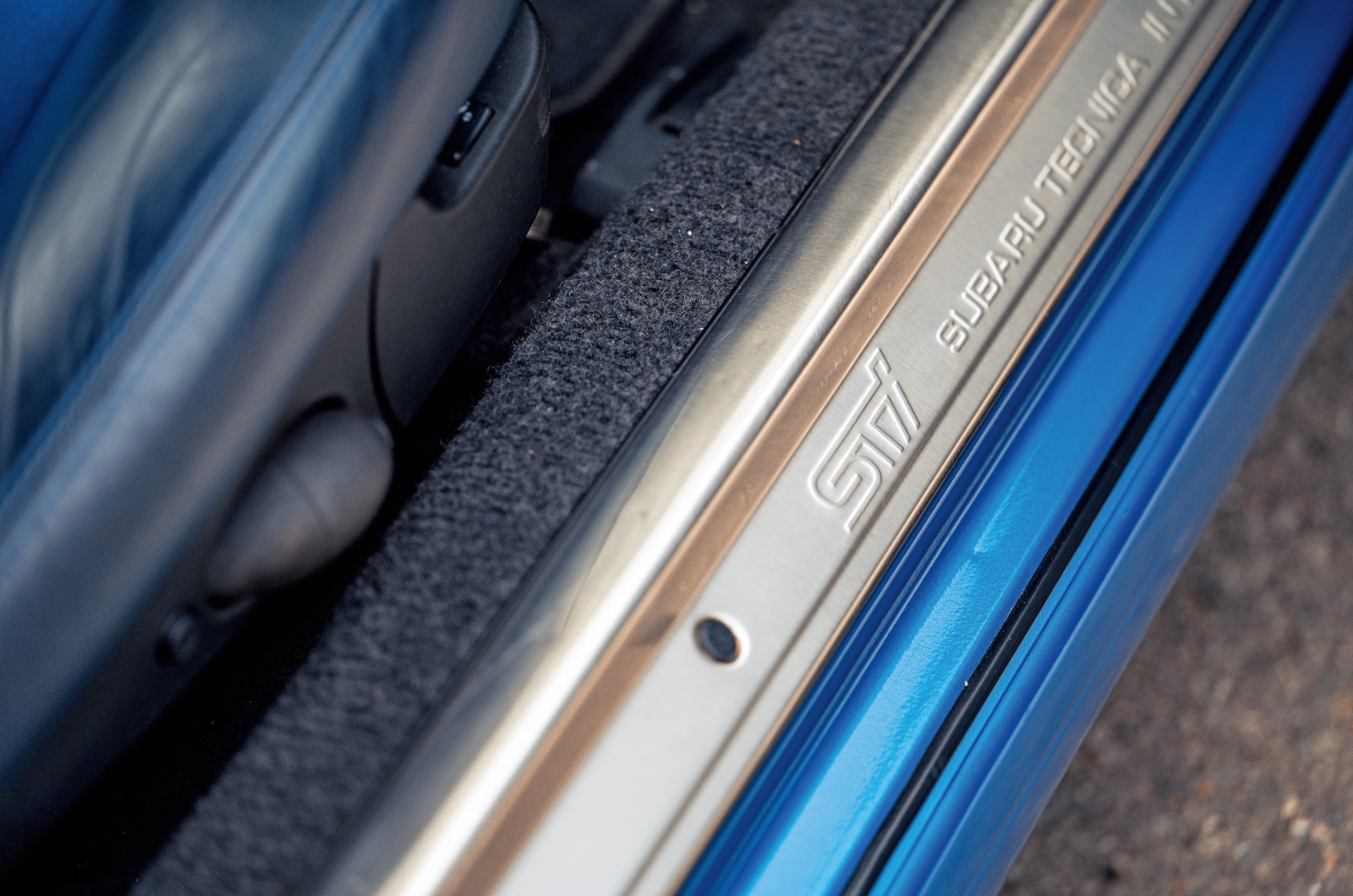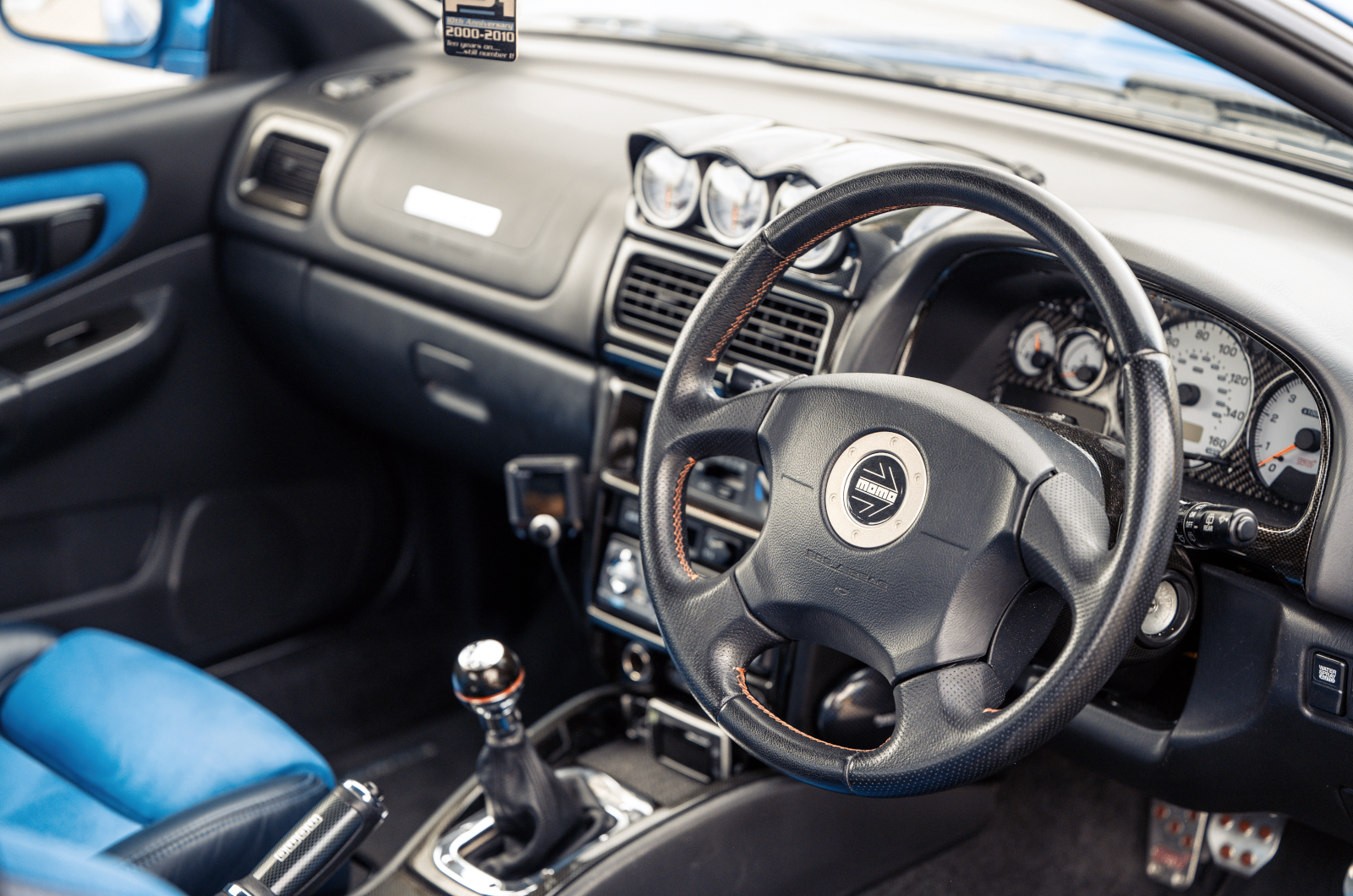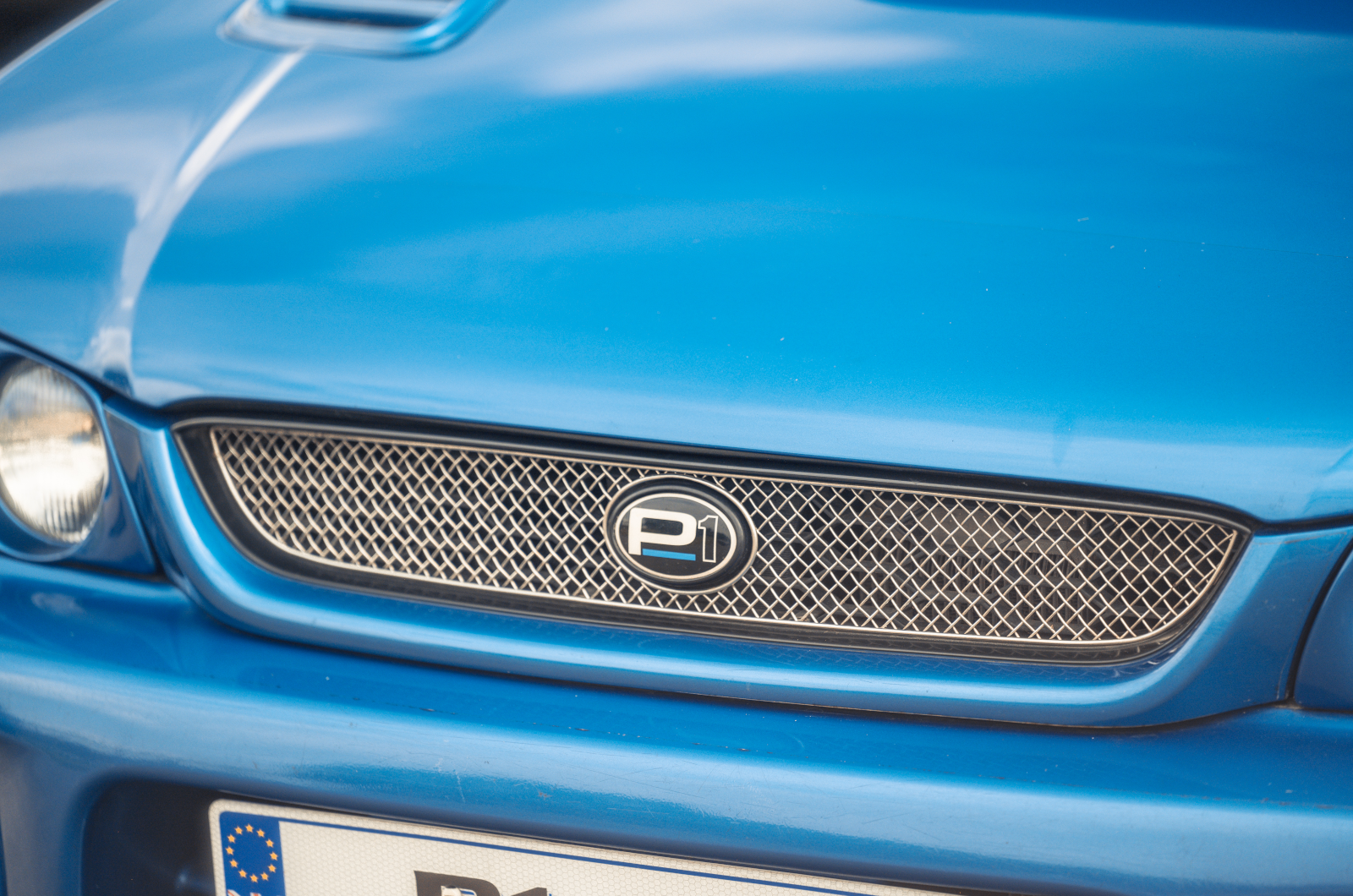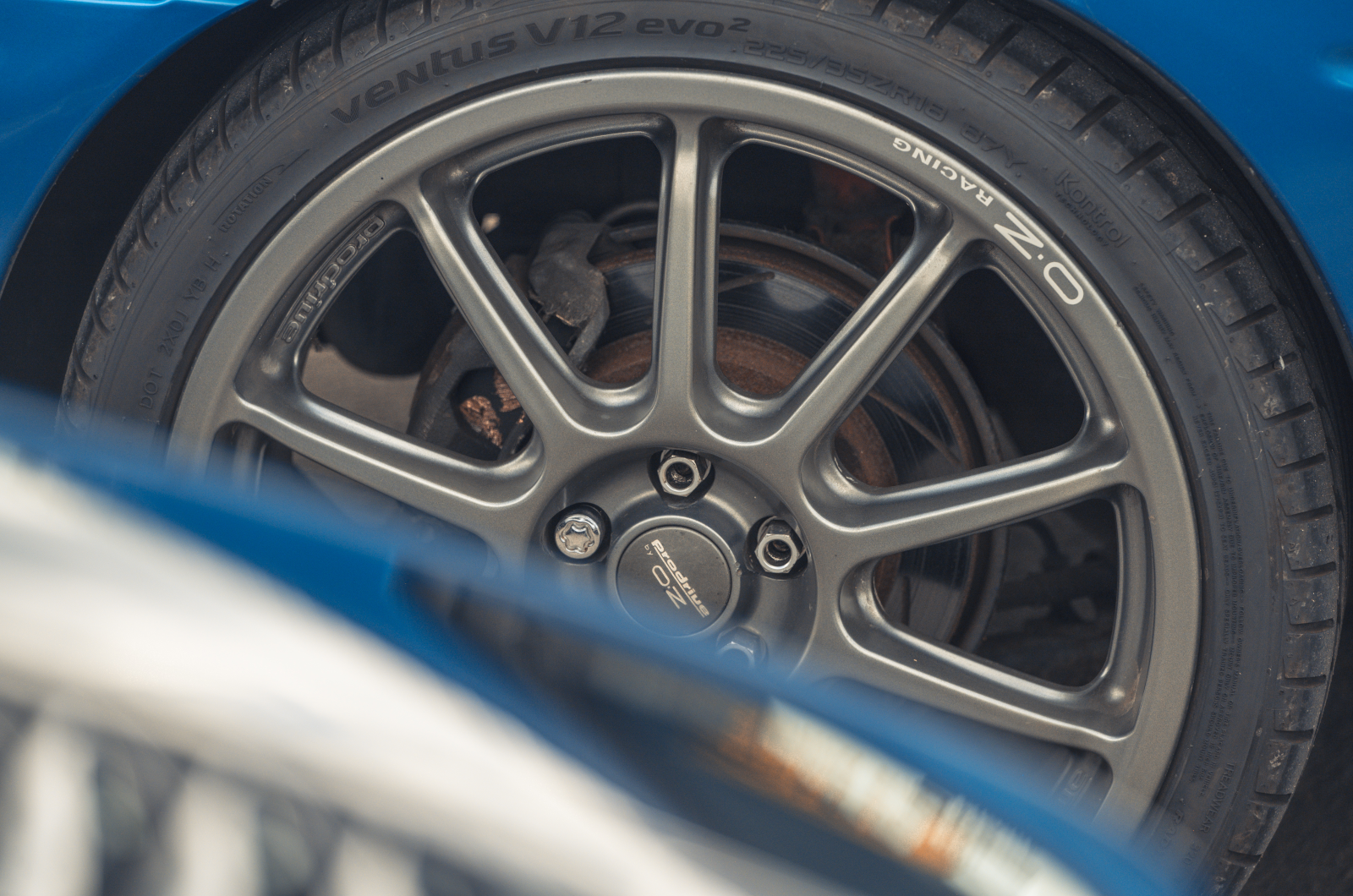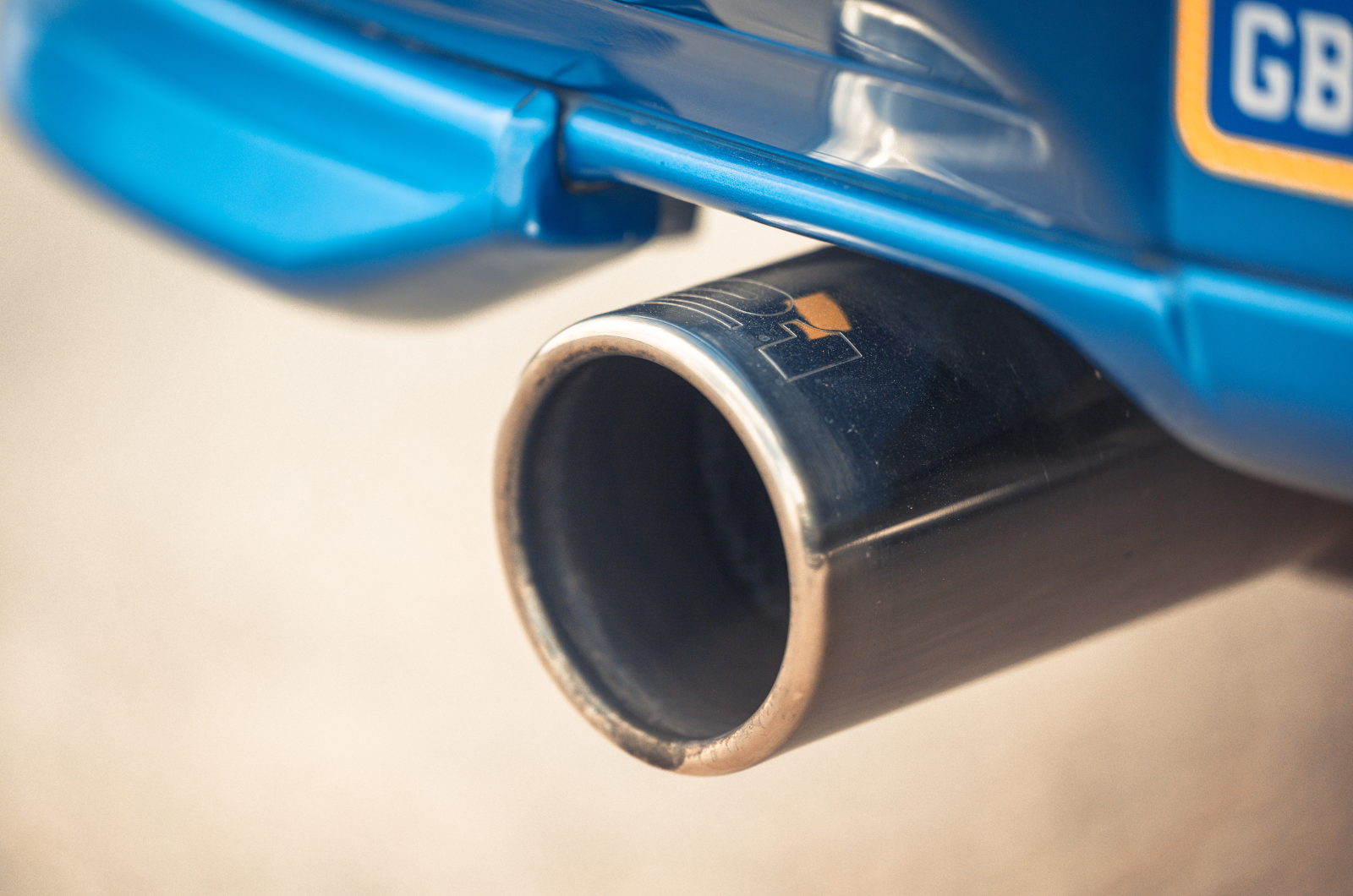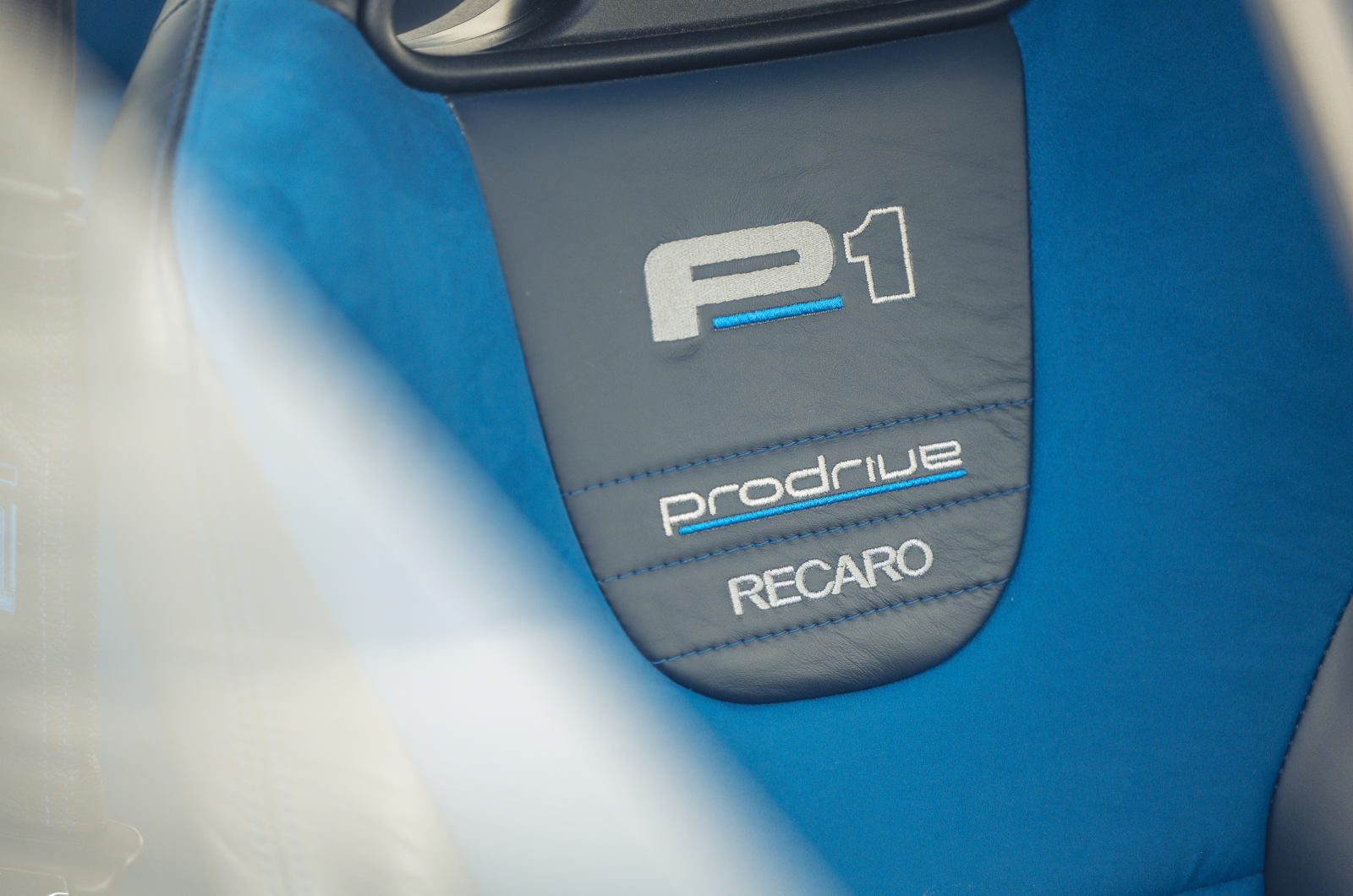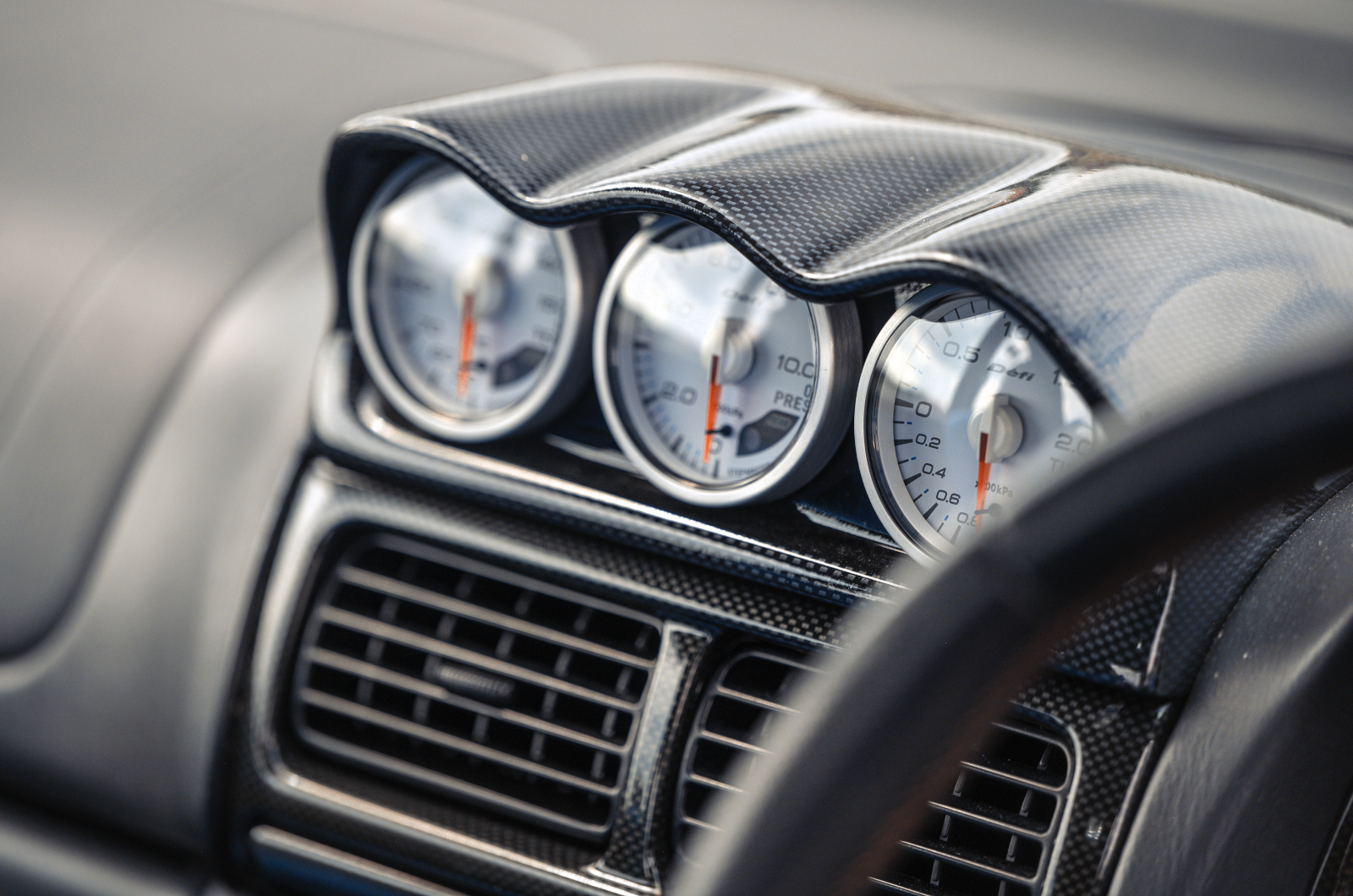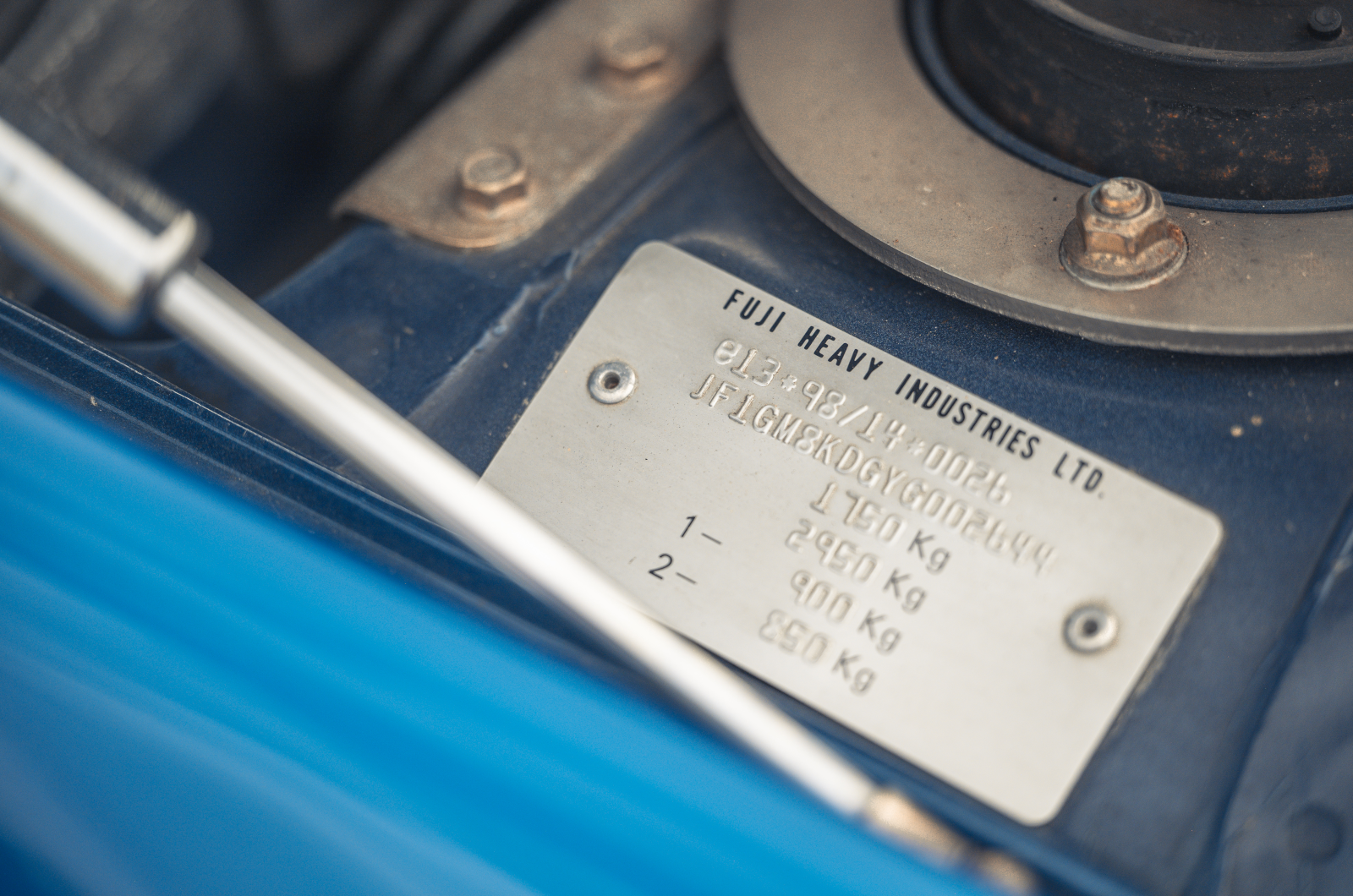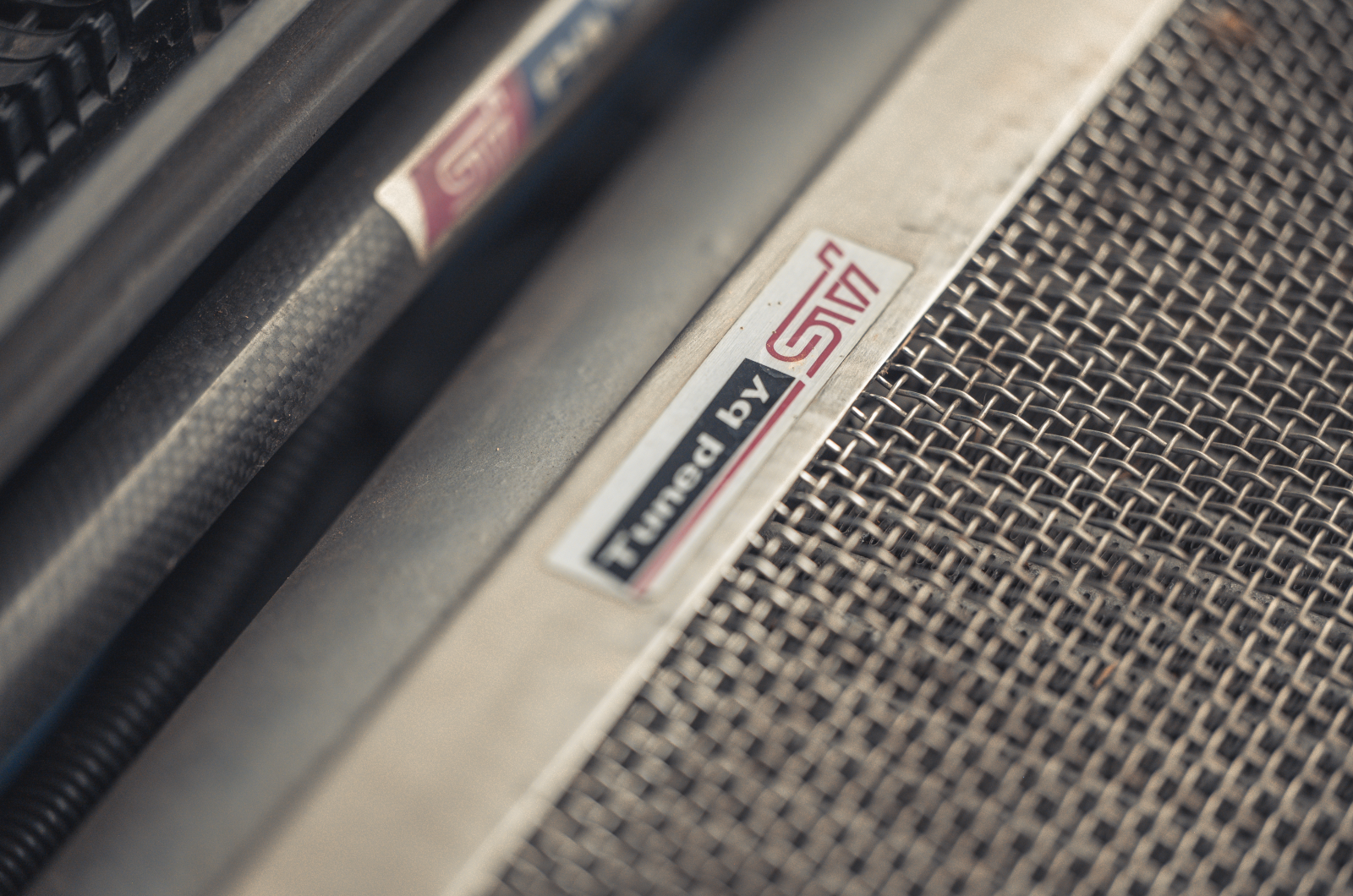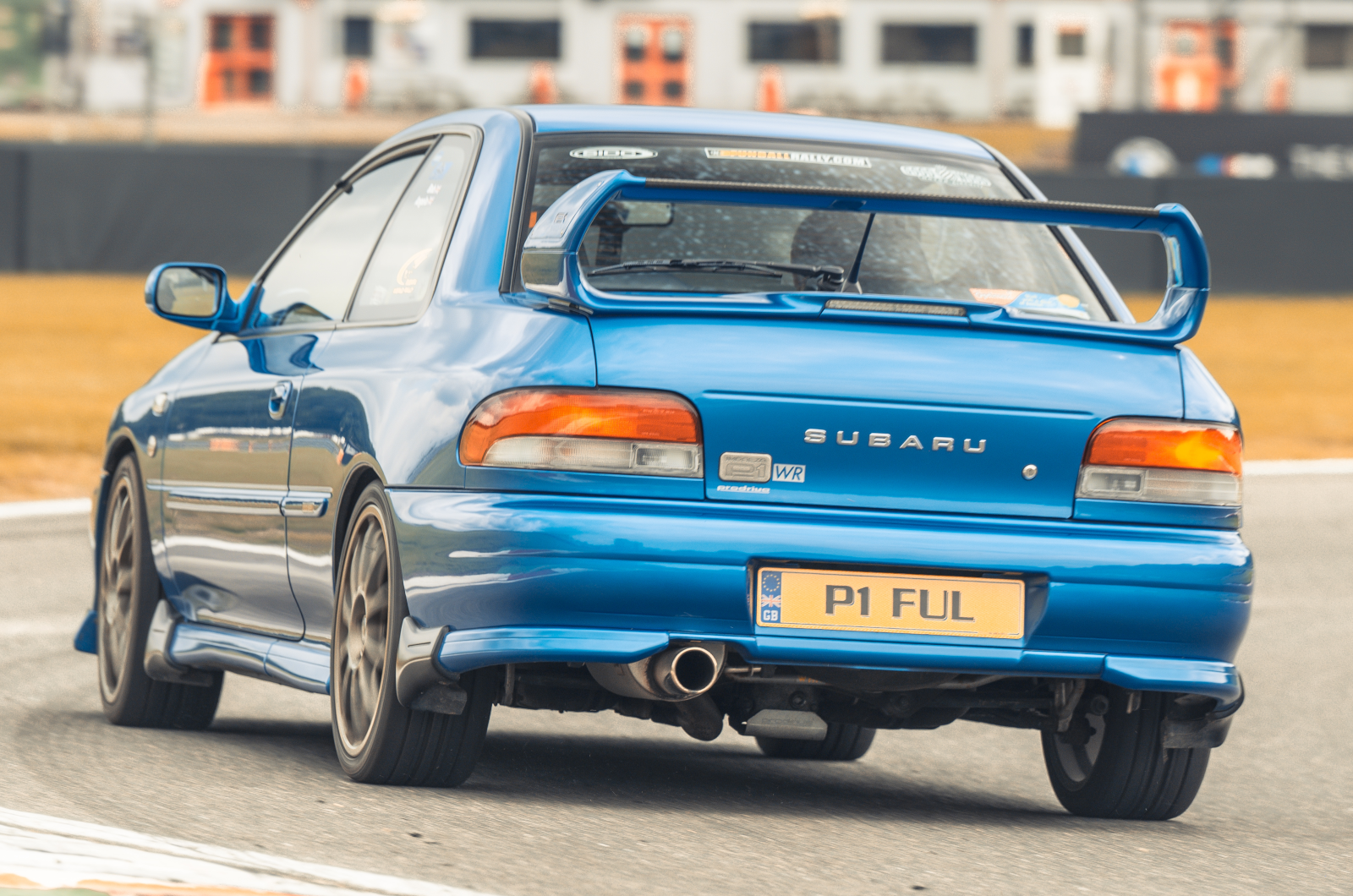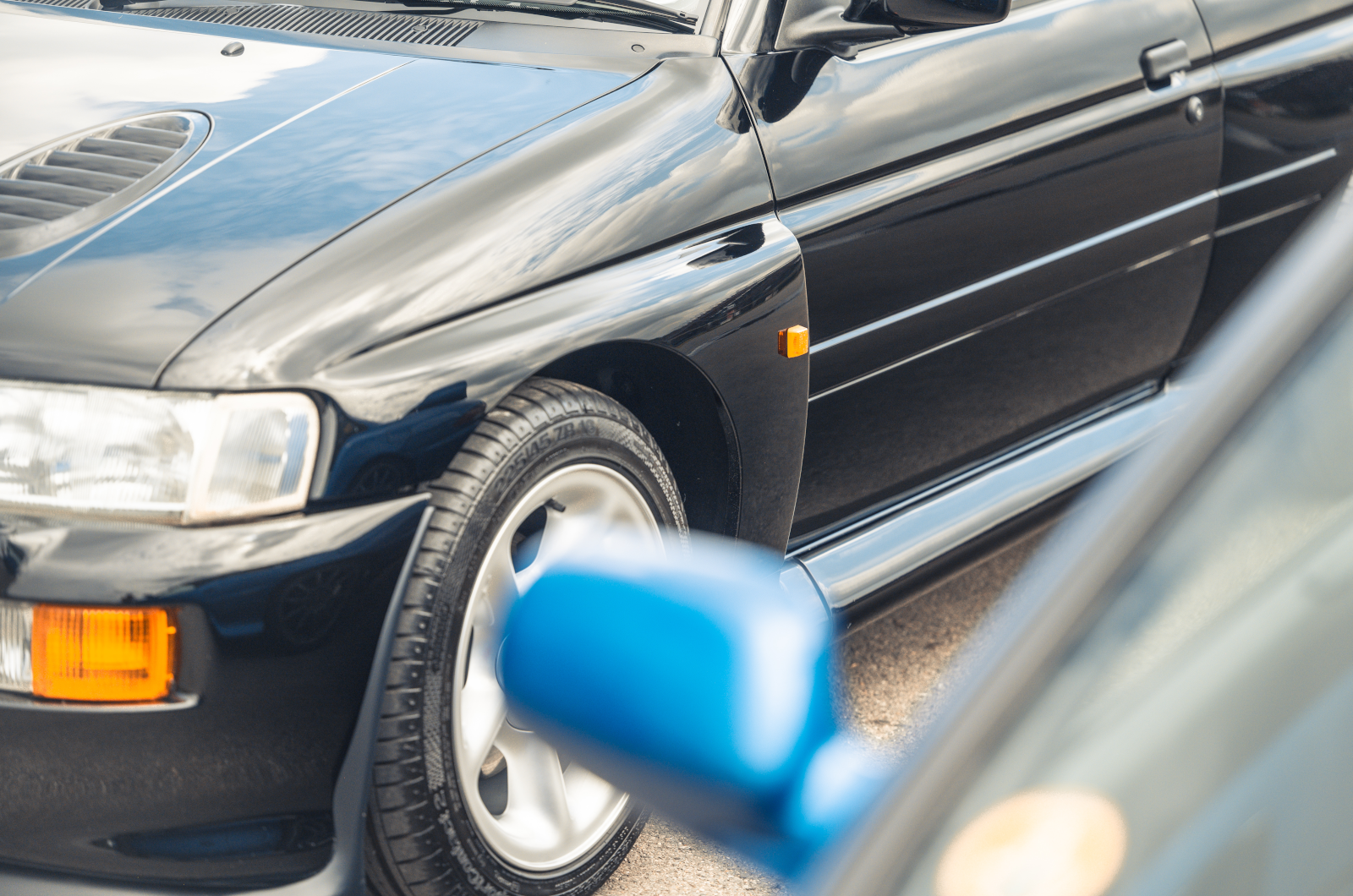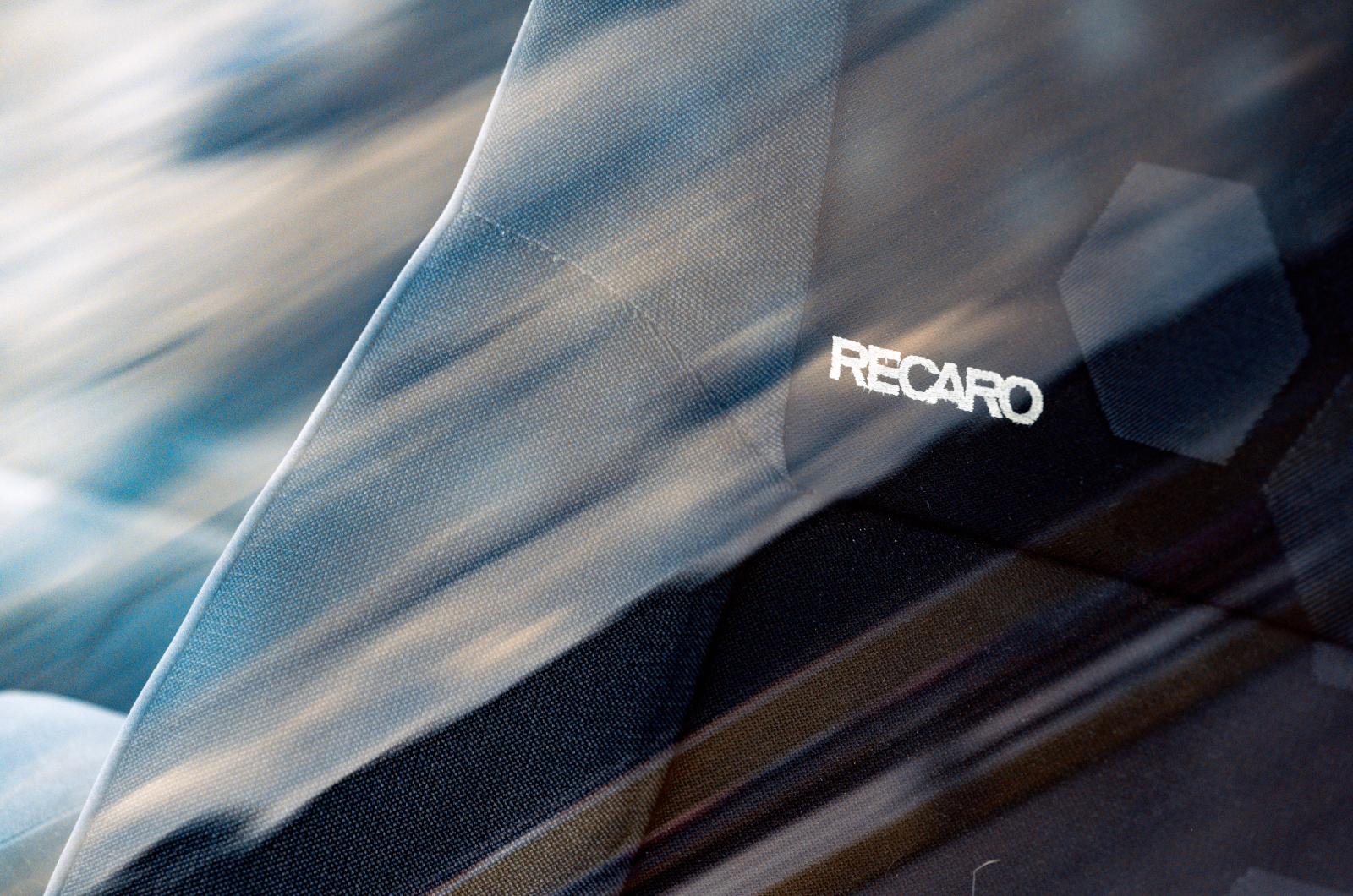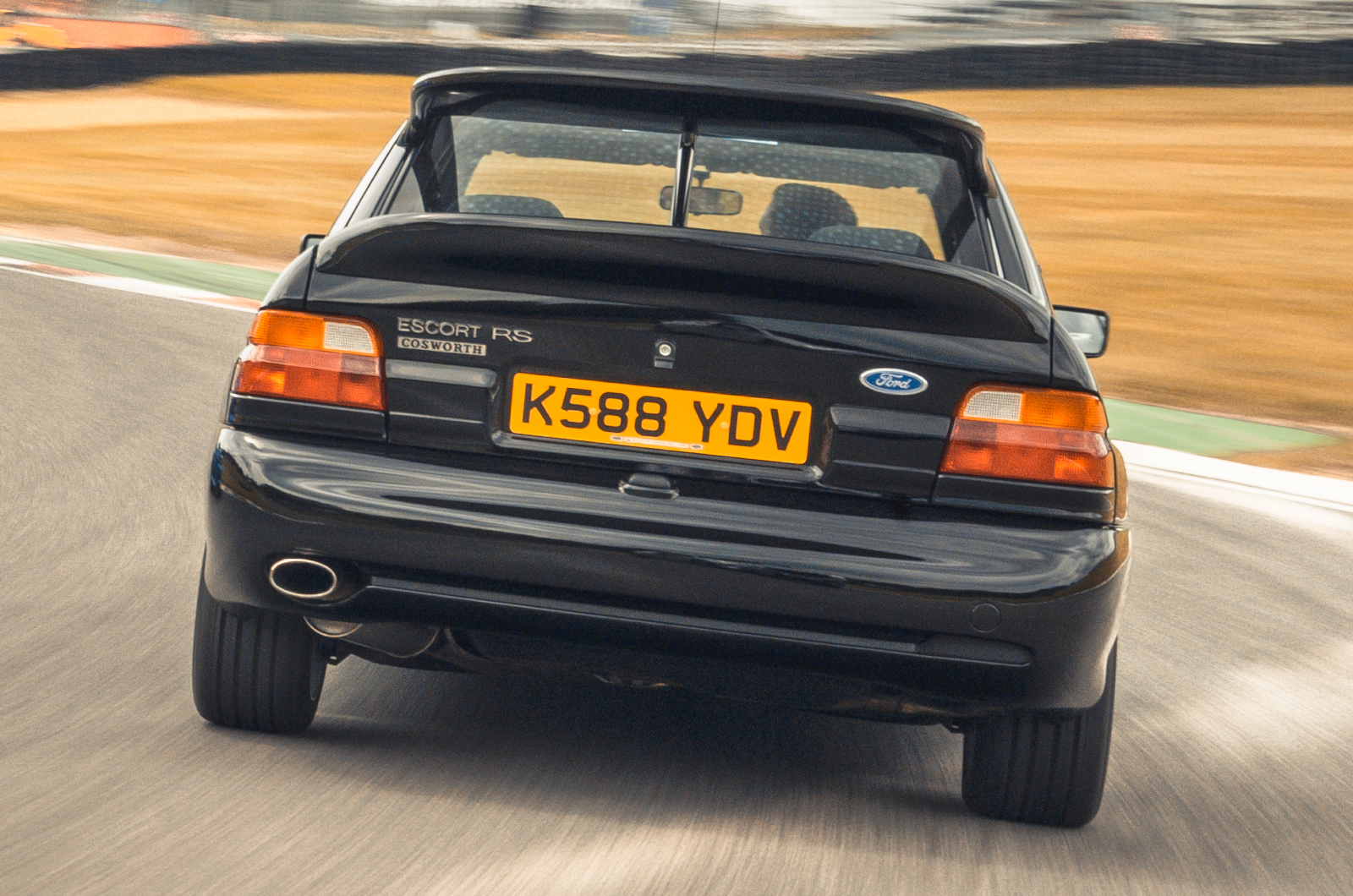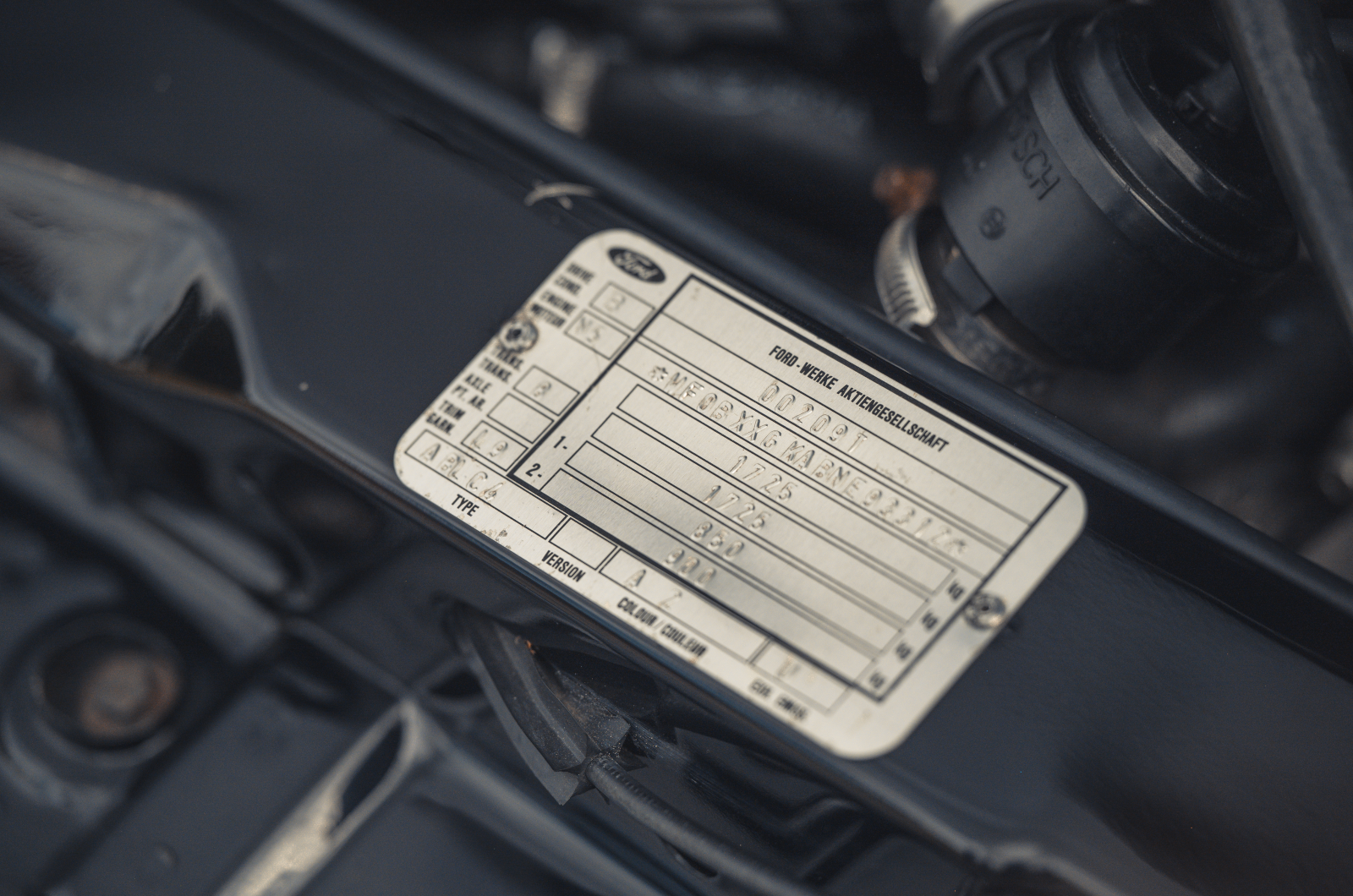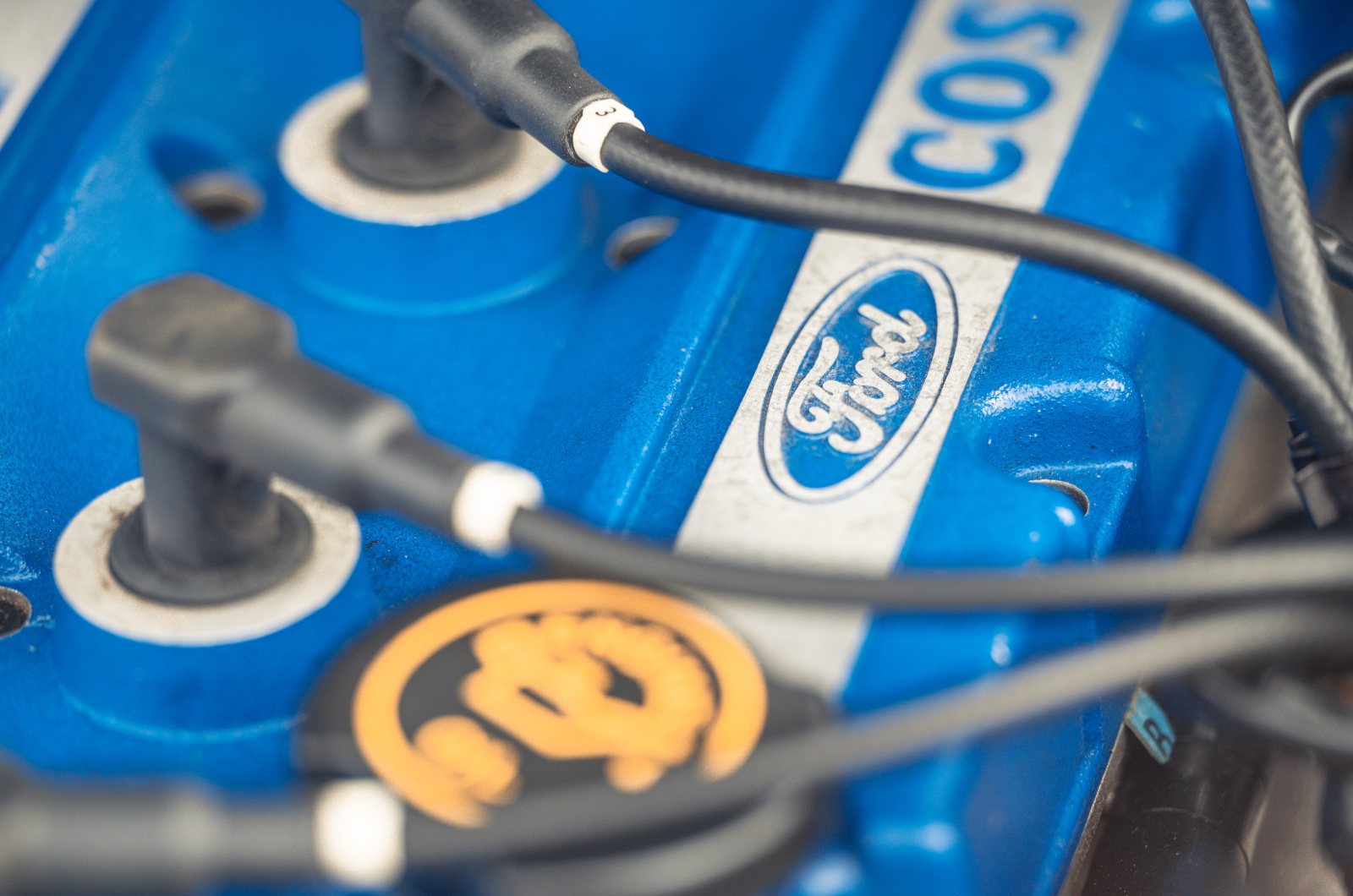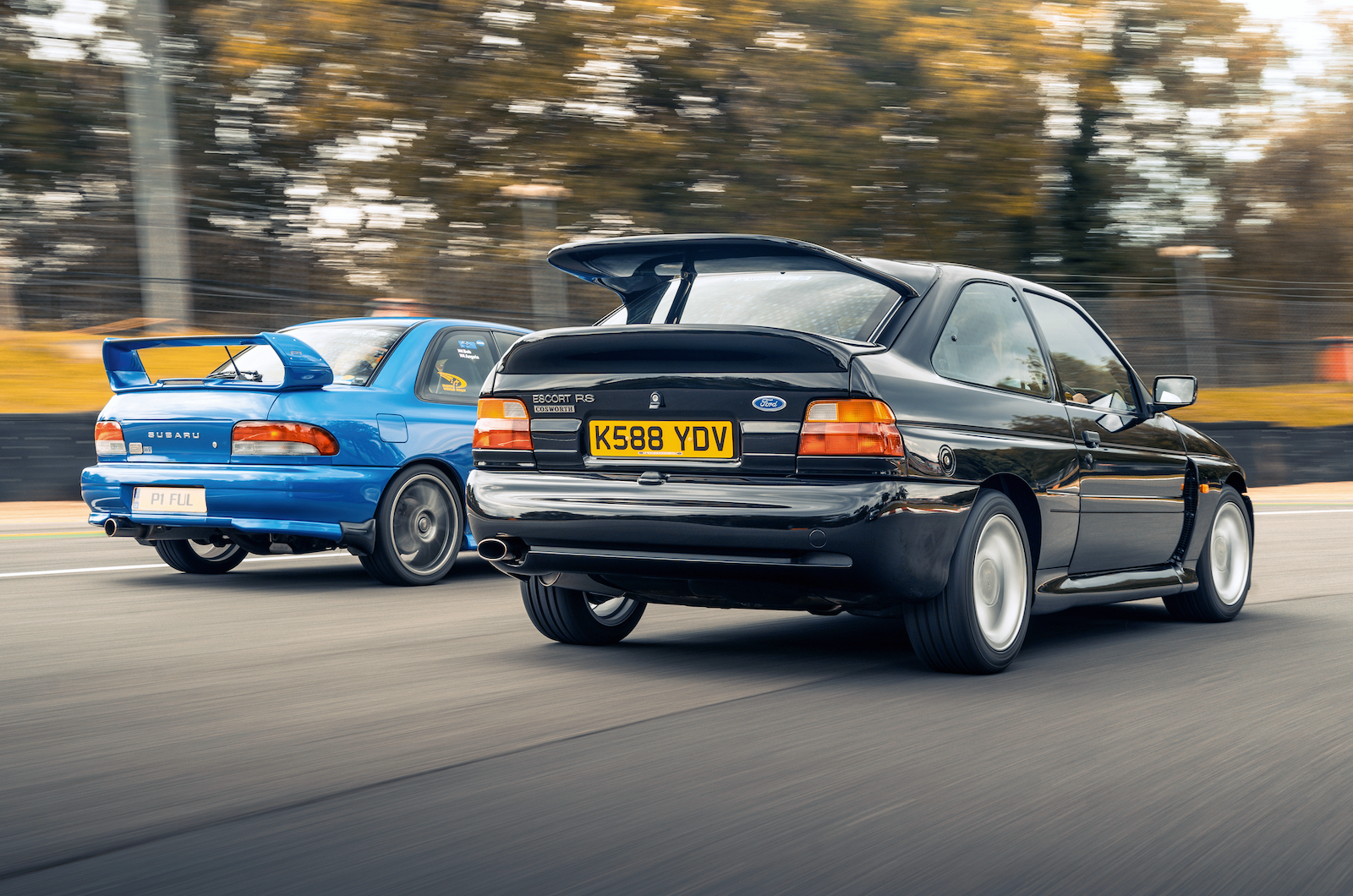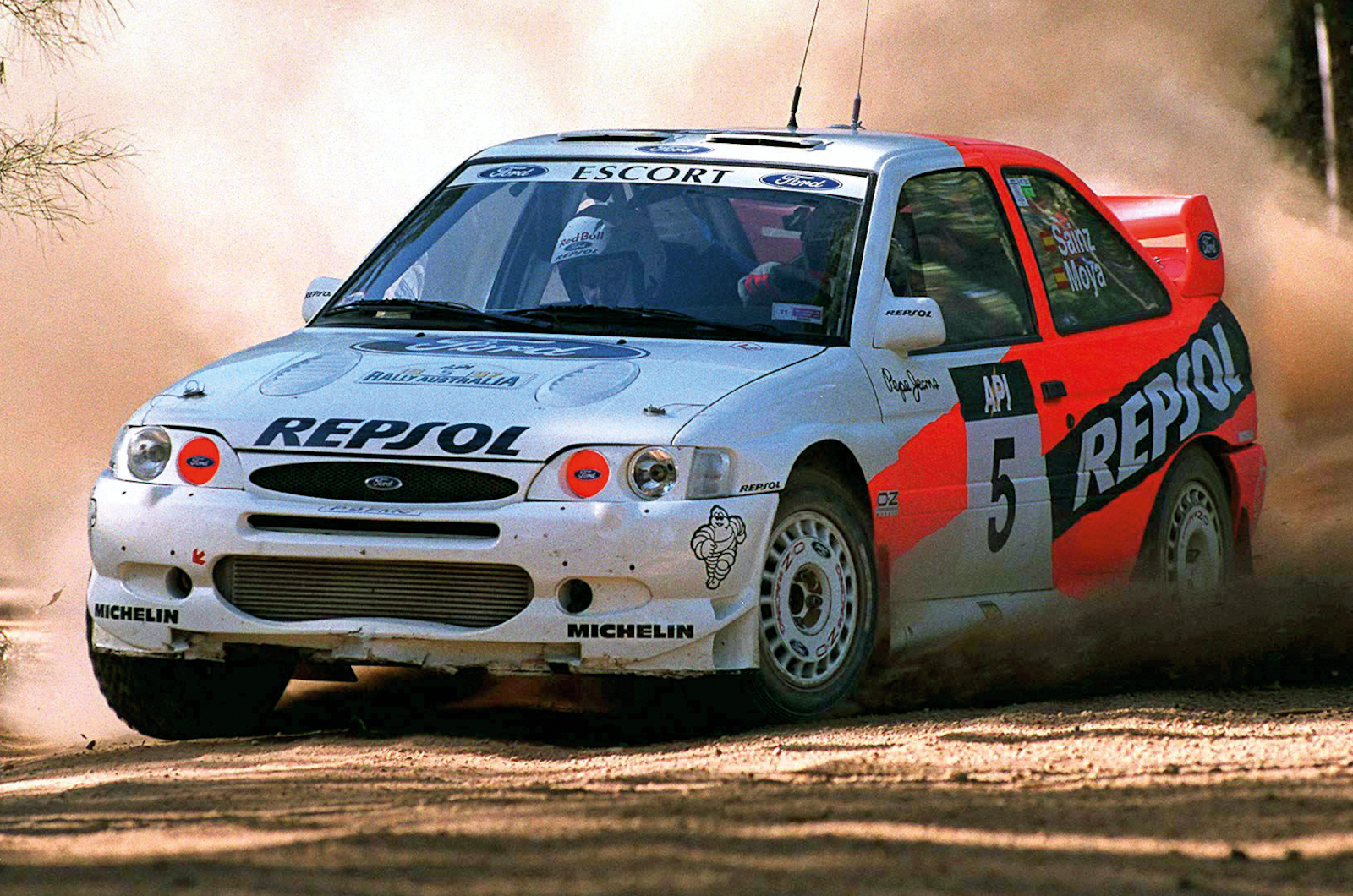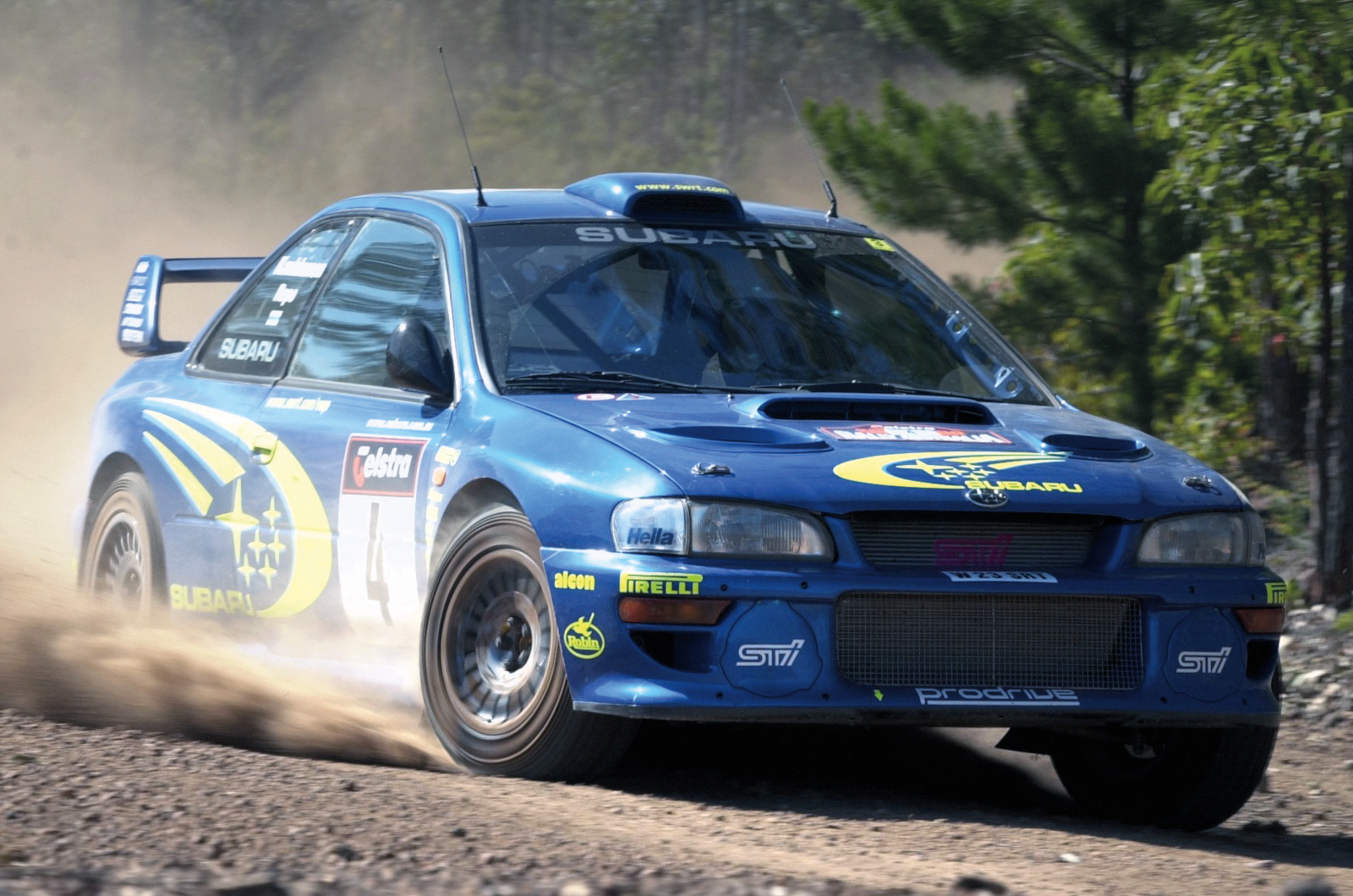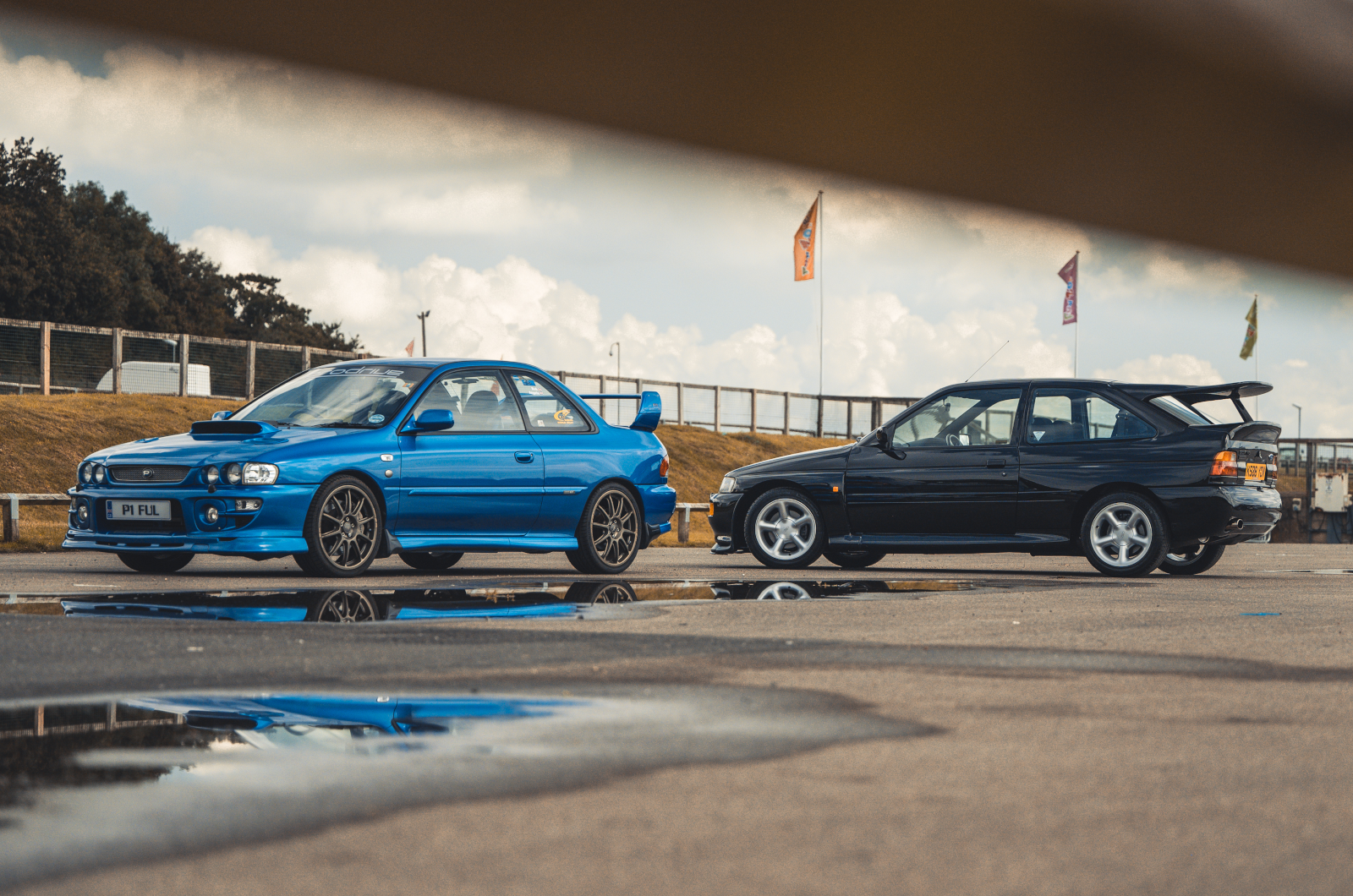David Richards is satisfied with the result: “When you look at the whole package, the engine, suspension, interior and Peter Stevens’ unique styling with the Sonic Blue colour, I don’t think there is anything we would have, or could have, changed within the limitations of European type approval.
“The Impreza P1 was probably the best and most successful limited edition we ever created and was a great commercial success for Subaru UK.”
The Subaru Impreza P1’s large steering wheel is an advantage at higher speeds
“Initially we targeted just 500 cars, but demand was so strong that we quickly increased the run to 1000,” Richards continues.
“The cars were being snapped up as quickly as we could make them here in the UK.”
Bob Fuller was among the first in line, having owned his Impreza P1 from new in 2000 after a six-month wait for delivery.
Subaru badges were ditched for this Impreza P1 in favour of a Prodrive logo
Showing build number 548 out of 1000, Fuller’s car has clearly evolved during his tenure with it.
“When Prodrive launched the P1, it offered owners a wide range of official ‘WR’-branded upgrades,” he says. “In an effort to set my car apart, I fitted quite a few of them.”
Fuller chose the optional 18in ‘WR’-branded rims for his Subaru Impreza P1
As a result, his P1 sits on 18in rims, as opposed to the standard 17in items, which also meant larger 330mm front discs could be fitted.
Outside, you clock the two HiD lights on either side of the grille (the only non-approved upgrade), replacing the single-lens units that, says Fuller, were no match for the car’s performance at night.
Other upgrades on this Subaru Impreza P1 include a larger exhaust and deeper bucket seats up front
Completing the package is a Prodrive-approved larger-bore exhaust, which was fitted post-production to get around type-approval restrictions, and upgraded front Recaro seats with deeper bolsters and more upmarket trim.
Inside, it’s clear that the Recaros were a good investment, and you instantly feel comfortable behind the surprisingly large (by today’s standards) red-stitched leather steering wheel.
Hard cabin plastics inside the Subaru Impreza are typical of the era
The dash is typical early-century Subaru: scratchy plastics and faux carbonfibre frame a plethora of dials and switches, including three high-mounted clocks monitoring engine status.
Your view ahead is dominated by the bonnet scoop, mounted just in front of the scuttle.
Turn the key and you just know that the distinctive, deep boxer rumble is a portent for the fireworks that are to follow.
The Subaru Impreza P1’s 1994cc ‘boxer’ makes 276bhp, but it’s delivered in a linear fashion
The P1 is happy to burble around at low speeds, with light steering and a progressive clutch action, but once you start to dip into its well of power the P1 comes alive; now you’re in Richard Burns’ car.
The rumble takes on a hard edge, and while acceleration is surprisingly linear, from 4500rpm to its 8000rpm redline the P1’s full turbocharged majesty can be felt as you grab each higher gear through the notchy, short-throw ’box.
The Subaru Impreza P1 is biased toward understeer, but offers reassuring grip
The large wheel makes the power steering feel lower-geared than it is, but at higher speeds that’s no bad thing, and you delight in its friction-free precision as you dive deeper and faster into bends, failing comprehensively to unstick the wheels from either axle.
The P1’s 45:55 front-to-rear torque split means a degree of default understeer that can be manipulated on the throttle, but overall the P1 has an assured authority over seemingly any road surface.
This Ford Escort RS Cosworth was one of the first to hit British roads
Greg Evans has owned his October ’92 Escort RS Cosworth for six years. It was in storage for nine years before that, which explains why, after nearly 30 years, its odometer reads just 50,600, including the mere 1000 miles added by Evans.
Still in its original Flat Black (a Sierra colour), this completely standard car in factory-fresh condition is one of the first registered in the UK, with build number 851 out of a total run of 7145.
That also marks it as a genuine ‘Big Turbo’ homologation model from the first batch.
Recaro made the seats found in both the Ford Escort RS Cosworth and the Subaru Impreza P1
Drop into the RS’s high-bolstered driving seat and you’re greeted by that familiar smell, which seems to pervade all Ford cabins from this era.
Like in the P1, a trio of dials perches atop an otherwise normal-looking Escort Mk5 dashboard.
You sit behind a smaller three-spoke wheel than in the Subaru, with the pedals offset to the right to clear the broad transmission tunnel and a relatively low-mounted gearlever sited behind the factory radio/cassette player with its separate graphic equaliser.
Below 3500rpm, the Ford Escort RS Cosworth feels like a normal family hatchback
The feeling of normality extends to driving the RS at regular speeds.
It feels softer than the P1, with more rubber in the main controls and suspension making for a more pliant secondary ride versus the Impreza, allied to an engine that at low-to-moderate revs sounds quite anodyne.
You know what’s coming, though: performance is tepid (but less so than expected) until around 3500rpm, when the Garrett T34 starts to spool up, and then comes on full song from 4500rpm.
The difference in power delivery makes these two cars feel of distinctly different vintages
With 224bhp, and weighing 2811lb (1275kg), the RS is no rocketship by today’s standards, but the hefty turbo punch it delivers provides the kind of old-school drama that is sadly missing from modern turbo engines.
Sadly? It’s certainly an acquired taste, and the later RSs, which pulled from 1000rpm lower down, were easier to live with.
But it remains the Big Turbo’s calling card, and that we should applaud.
This duo’s rally pedigree shines through, although neither was built to leave the Tarmac
That both cars were so heavily influenced by motorsport at a technical level rarely seen today is refreshing.
The results were unashamedly road-biased and unlikely ever to see a forest track, but knowing that the teams which created them were at the forefront of world rallying gives each an unmistakable aura.
Images: Olgun Kordal
Thanks to Brands Hatch; Paul Painter; P1 WebOwners’ Club
Success on the world rally stage
Much of the works Escort RS Cosworth’s development work was carried out on the fly by then works driver Malcolm Wilson.
The car made an early, non-competitive appearance with him on the 1992 Scottish Rally; had it been an official entry it might have won, setting faster stage times than Colin McRae’s winning Subaru Legacy.
Carlos Sainz’s Ford Escort RS Cosworth tackles Rally Australia in 1997 © Getty Images
Ford never achieved its goal of clinching an overall Group A WRC manufacturers’ title, but in its first year, 1993, it won in Portugal, Corsica, Greece, Sanremo and Catalunya.
It then took two more wins in each of the following two years, plus a further two in 1997 in its final ‘WRC’ iteration.
Juha Kankkunen’s Subaru Impreza at Rally Australia 2000 © Getty Images
While the P1 didn’t exist to homologate Subaru’s works rally car, the two-door GC8-series Impreza on which it was based was the platform that underpinned the competition machine in which the Prodrive team enjoyed so much success between 1997 and 2001.
Another special edition Subaru Impreza, the RB5, was launched in 1999 to commemorate Richard Burns’ return to Subaru
It won the WRC Constructors’ Championship in 1997 and the Drivers’ Championship in 2001 with the late Richard Burns.
The car evolved significantly during its five-year life and never more so than in 2000, when 80% of its mechanical and electronic components were redesigned, in effect providing the technology for the next-generation Impreza.
Factfiles
Ford Escort RS Cosworth
- Sold/number built 1992-’96/7145
- Construction steel monocoque
- Engine iron-block, alloy-head, dohc 1993cc ‘four’, with Bosch injection and intercooled Garrett T34 turbocharger (Garrett T25 on non-homologation cars)
- Max power 224bhp @ 6250rpm
- Max torque 224lb ft @ 3500rpm
- Transmission five-speed manual, 4WD
- Suspension independent, at front by MacPherson struts rear semi-trailing arms, coil springs, telescopic dampers; anti-roll bar f/r
- Steering power-assisted rack and pinion
- Brakes vented discs, with servo and anti-lock
- Length 13ft 9¾in (4211mm)
- Width 5ft 8½in (1742mm)
- Height 4ft 8in (1425mm)
- Wheelbase 8ft 4½in (2551mm)
- Weight 2811lb (1275kg)
- 0-60mph 5.7 secs
- Top speed 144mph
- Mpg 28
- Price new £20,524 (Roadsport trim)
- Price now £50-80,000+*
Subaru Impreza P1
- Sold/number built 2000-’01/1000
- Construction steel monocoque
- Engine iron-block, alloy-head, dohc 1994cc flat-four, with fuel injection and intercooled IHI VF28 turbocharger
- Max power 276bhp @ 6500rpm
- Max torque 260lb ft @ 4020rpm
- Transmission five-speed manual, 4WD
- Suspension independent, at front by MacPherson struts rear semi-trailing arms, coil springs, telescopic dampers; anti-roll bar f/r
- Steering power-assisted rack and pinion
- Brakes vented discs, with servo and anti-lock
- Length 14ft 3¼in (4350mm)
- Width 5ft 6½in (1690mm)
- Height 4ft 7in (1400mm)
- Wheelbase 8ft 3¼in (2520mm)
- Weight 2855lb (1295kg)
- 0-60mph 4.7 secs
- Top speed 150mph
- Mpg 24
- Price new £31,500
- Price now £40-60,000+*
*Prices correct at date of original publication
READ MORE
Signing off in style: Mitsubishi Lancer Evolution VI vs Evolution X
TR4: Triumph’s rally underdog
Changing of the guard: Talbot Sunbeam Lotus and Audi quattro
Simon Hucknall
Simon Hucknall is a senior contributor to Classic & Sports Car
